Aperture's Blog, page 23
December 6, 2023
Sam Contis Asks What It Means to Move through the Landscape
This essay originally appeared in Sam Contis: Overpass (Aperture, 2022) under the title “H.”
A desire line is a path made to cut corners. You’ll have seen them—in a field, tracing the most concise route between two gateways, or in an urban park in places where the paving winds the long way around the grass. Many people follow the same shortcut, and eventually a path becomes visible where the vegetation is worn away. Even when there is nobody there, you can see the physical traces of all those people and something they were aiming for, written plainly on the bared ground.
There are similar traces visible in Sam Contis’s photographs of stiles, tracks, and fences, images of human passage in which the human form is notably absent. A stile is a crossing point: a step or narrow gap in a fence, wall, or hedge, designed so that people can pass through but sheep and cattle can’t. It’s an old form: simple and variable. Anything that allows a person to pass over or through a barrier, but which is too narrow or fiddly for livestock, works. Two steps made of cobbles, breezeblocks, or pieces of wood nailed together; a slim gap let into a low stone wall; plastic sacking tied around a barbed-wire fence. All in and around these stiles there are traces of human activity, desire lines in an extended sense: people ’s desires and needs pressed into the places where they’ve been. There are trodden grasses and plants that have been crushed or bent around the worn paths. Cinder blocks, placed in front of one stile to help small legs make it up to the first step. A broken fence has been mended in a makeshift way, a short length of wire looped and twisted to hold a closure, it looks like a bad impression of a cobweb. Elsewhere, vertical posts are cut with a tapering droplet form at the top, narrowing to give the human hand something to hold. There’s a place where three empty lager cans have been dropped on the ground, below a stile at the meeting of a footpath and a road: not long ago, somebody sat on the fence here, drinking. They crumpled the cans and then they moved on.
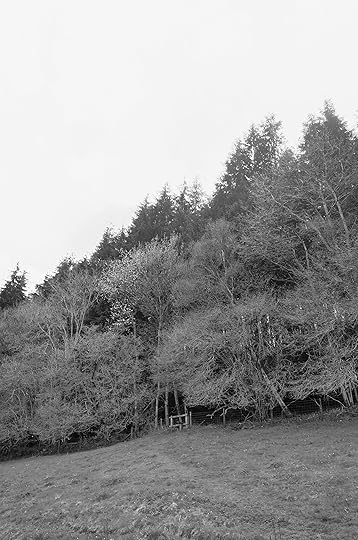
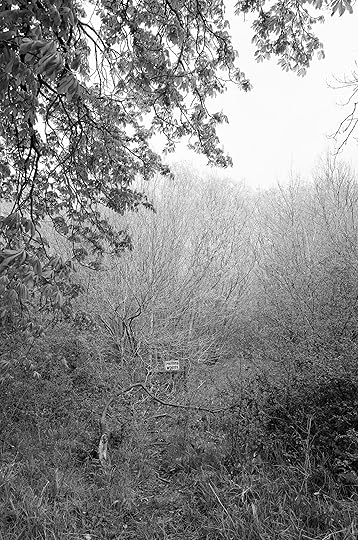
Looking at these images, I thought of the histories of the English countryside told by Oliver Rackham, an ecologist whose books describe how layers of history materialize in a landscape. Rackham reads terrain as though it was an archive and he finds everything, everywhere crowded with evidence of past lives. Roads commemorate encounters, desires, and obstructions: the route bends here, where a farmer once dumped a pile of trash, and here where a group of kids lit a bonfire, and here, where a woman abandoned her dead horse. Travelers continued to pursue these diversions even after the obstruction was removed, so that the road, as it moved across a landscape, became a “series of wobbles,” each wobble the mark of an event. Barriers have stories too: there are hedges that stand as “the ghosts of woods that have been grubbed out,” a line of trees from the original edge making a lasting boundary between new fields. Perhaps every mark in any landscape is somehow a sign of drive, force, want, or need.
If we were to read the story of one of these stiles, in one of these images, what desires would it document? The stile seen here looks ordinary. A thin plank supported by two greenish posts: a single wooden step, bridging a fence between two sheep pastures in the north of England. A large, flat-faced cobble from the nearby river has been placed on the ground at one side to steady the feet. This stile is almost identical to the stile in the next field … but this one is messier, slightly asymmetrical, because this one began with a bad mood. It was the product of a poor repair job, knocked together one October day in 2004, a little past midday. The farmer who made it would, ordinarily, have been eating, but that day the telephone rang and he left his plate on the table, still half full. He talked, and listened, and the food cooled. It was his sister on the phone. She wanted to discuss their elderly mother’s care. They ended up arguing.


After the conversation, the farmer didn’t feel like finishing his meal. He left the house with his toolkit and went out across the fields to mend the broken stile. He took down the collapsed plank, and tested the posts to check that they were still sound. Then he knelt on the makeshift paving slab to hammer in the new step. One hand gripped the stile, the other pounded in the nails rapidly and hard. As he worked, he was running back over the argument in his mind, thinking of what he should have said to his sister, and the hammer went down on his thumb. Abruptly, he had to stop. Black blood pooled under the nail. He stood and stepped back, folding the fingers of his other hand protectively around the damaged thumb, to look at his work. The stile was unbalanced, the plank extending too far on one side, leaving only a narrow ledge on the other.
There had been stiles like this on his land for centuries, wherever people needed to pass. His parents and grandparents had tended to some, neglected others. Throughout the country are tens of thousands of miles of public footpaths, running across private land. Historically, landowners would see to the upkeep of stiles and gateways along these paths, when it was in their interests to do so. But relatively recently this upkeep was made a legal obligation. Since the Countryside Act of 1968, landowners have been required to maintain the stiles that made free movement possible, and this particular repair was long overdue. Over the years, the stile had taken many forms: its stakes and poles had been erected and knocked over; the stone slabs at its base used, worn, cracked, and carried away; the horizontal planks had been replaced many times.
The new plank that our farmer hammered in that day has its own story. It was Scots pine, swift-grown on timberland in western Scotland in the late 1990s. Tree by regularly spaced tree, the forest was being infiltrated by a poisonous fungus. The fungus didn’t look like much (fingernail-sized, pearly umbrellas growing on the ground below each sick tree), but it could rot live wood before the tree matured. Two square miles of pine were felled young to stop the spread and the timber from these trees, which couldn’t be sold through the usual channels, went cheap. Our farmer purchased green posts and thin planks from the lot, roughly cut and still wet.
Advertisement
googletag.cmd.push(function () {
googletag.display('div-gpt-ad-1343857479665-0');
});
But none of this explains the path. It doesn’t tell us why people were passing through right here, in this place—why they needed a crossing-point here, at this corner of this field, and why there was a stile that our farmer was now legally bound to maintain. We need to travel back again to make sense of it, to see the stories that caused it to materialize here.
Long before the 1968 Act, the English countryside was occupied and worked in common. Landowners held legal and political power, but commoners had the right to grow food, raise animals, or gather fuel from the fields and forests that they lived near. This was no Arcadia: landowners couldn’t have maintained their power without giving the peasants who worked for them some means to feed themselves. But the rights were real and honored. They were written down and lived out for centuries, during which peasants were able to make a living off their local land, right up to the point at which those rights were eroded and in some places eradicated between the seventeenth and the nineteenth centuries, during a series of movements known as enclosures. Parish by parish, commoners were decisively deprived of this long-held tenancy of the landscape. Small plots farmed in rotation were ploughed up in favor of rationalized growing systems, with long straight hedgerows dividing large, regular fields. Straight roads, which ran from town to town, were expanded, and the tracks that mazed across fields, connecting every cottage or farmstead, woodland, or pond, faded into the grass. The pathway on which our stile stands was once a highway: a practical route rather than a recreational footpath. It had its deliveries and its commuters. Its placement, right here, made the neatest cut-through for the milkmaid in the early eighteenth century who used to take a pail from the dairy farm to the big house every other day; passing, in the other direction, children sent out by their parents to gather sticks for the fire. Already, then, this crossing had been in use for hundreds of years. Medieval peasants were here, going between their cottages and their strips of land, and occasional travelers exported materials across longer distances, moving stone and timber, lime and metals and chalk and charcoal, from forests and mines, to cities, building sites, shipyards. The crossing had been used for years, decades, centuries before that. Back when the lightly worn path was barely visible on the ground, humans walked here, taking hazels and hawthorn with them when they passed.
Perhaps, looking at the histories that materialize in this ordinary stile, we have to push its beginning even earlier. The environmental activist and writer George Monbiot, among others, has propagated a theory that the British landscape is one that evolved in response to threats that have long since disappeared. The blackthorn spines we see in our hedge evolved to deter rhinoceros tongues. Birch bark, glowing white with dark striations on the edge of this wood, would confuse an ancient elephant’s limited color vision. Monbiot mentions the hippopotamus bones discovered in central London, below Trafalgar Square, and pictures a vision of the whole of Britain as a place adapted to species that no longer live there, “a ghost ecosystem.”
 var container = ''; jQuery('#fl-main-content').find('.fl-row').each(function () { if (jQuery(this).find('.gutenberg-full-width-image-container').length) { container = jQuery(this); } }); if (container.length) { const fullWidthImageContainer = jQuery('.gutenberg-full-width-image-container'); const fullWidthImage = jQuery('.gutenberg-full-width-image img'); const watchFullWidthImage = _.throttle(function() { const containerWidth = Math.abs(jQuery(container).css('width').replace('px', '')); const containerPaddingLeft = Math.abs(jQuery(container).css('padding-left').replace('px', '')); const bodyWidth = Math.abs(jQuery('body').css('width').replace('px', '')); const marginLeft = ((bodyWidth - containerWidth) / 2) + containerPaddingLeft; jQuery(fullWidthImageContainer).css('position', 'relative'); jQuery(fullWidthImageContainer).css('marginLeft', -marginLeft + 'px'); jQuery(fullWidthImageContainer).css('width', bodyWidth + 'px'); jQuery(fullWidthImage).css('width', bodyWidth + 'px'); }, 100); jQuery(window).on('load resize', function() { watchFullWidthImage(); }); const observer = new MutationObserver(function(mutationsList, observer) { for(var mutation of mutationsList) { if (mutation.type == 'childList') { watchFullWidthImage();//necessary because images dont load all at once } } }); const observerConfig = { childList: true, subtree: true }; observer.observe(document, observerConfig); }
var container = ''; jQuery('#fl-main-content').find('.fl-row').each(function () { if (jQuery(this).find('.gutenberg-full-width-image-container').length) { container = jQuery(this); } }); if (container.length) { const fullWidthImageContainer = jQuery('.gutenberg-full-width-image-container'); const fullWidthImage = jQuery('.gutenberg-full-width-image img'); const watchFullWidthImage = _.throttle(function() { const containerWidth = Math.abs(jQuery(container).css('width').replace('px', '')); const containerPaddingLeft = Math.abs(jQuery(container).css('padding-left').replace('px', '')); const bodyWidth = Math.abs(jQuery('body').css('width').replace('px', '')); const marginLeft = ((bodyWidth - containerWidth) / 2) + containerPaddingLeft; jQuery(fullWidthImageContainer).css('position', 'relative'); jQuery(fullWidthImageContainer).css('marginLeft', -marginLeft + 'px'); jQuery(fullWidthImageContainer).css('width', bodyWidth + 'px'); jQuery(fullWidthImage).css('width', bodyWidth + 'px'); }, 100); jQuery(window).on('load resize', function() { watchFullWidthImage(); }); const observer = new MutationObserver(function(mutationsList, observer) { for(var mutation of mutationsList) { if (mutation.type == 'childList') { watchFullWidthImage();//necessary because images dont load all at once } } }); const observerConfig = { childList: true, subtree: true }; observer.observe(document, observerConfig); }Perhaps our stile began, then, before the human, and even before other mammals made the earliest desire paths here, into and out of the wood. Perhaps we need to explore the stories of the mycorrhiza, evolving in symbiosis with aquatic plant life, which enabled plants to colonize dry land, which enabled trees to emerge, which enabled our Scots pine, which created this green fencepost.
Or, looking at the river stone that’s used as a rudimentary step, we need to rewind to its moment of creation: boiling seas; molten rock in a volatile atmosphere; eons inside the earth’s crust, millennia on a mountainside, decades of rolling underwater before it was stranded on the riverbank during a late-summer drought when our farmer took it away.
But, no. None of that is early enough. We need to move back further. Thousands and millions and billions of years; the origins of life. Meteors were seeding the planet with lively microscopic forms. Electrified molecules were merging and splitting in a primordial soup. The precise sequence of events is uncertain. The only thing we can say for sure is that things were volatile. Something unstable stuck, and set into being this sequence of events that leads us here, to this crossing-point, in the present.
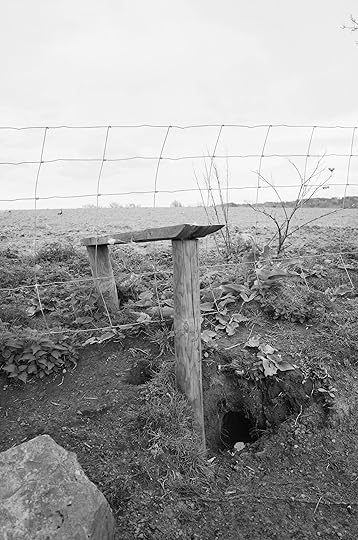
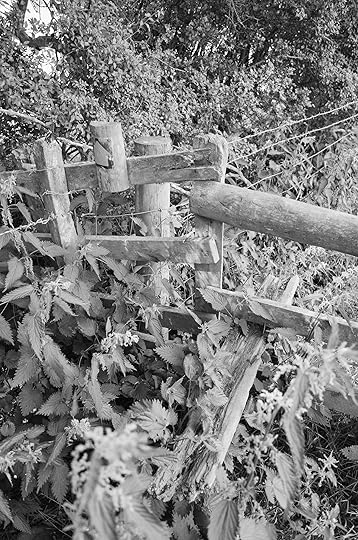
You can look at any landscape like that, seeing all these things that happened in this place in the past. They’re layered into every tiny area. A fencepost, a cobble, and a footprint in the mud, where ground has been worn bare below the stile, contains the story of last weekend’s rambler, and the evergreen that was cut down thirty years ago, and the primal molecule. You can look at a Peruvian mountainside, its trees and torn ruins, and see the signs of an industrious city. Or stand in Trafalgar Square to see ancient hippopotami wallowing where the waters used to meet. Or watch a harvester mechanically progressing through a soy crop in Kentucky and hear voices singing somewhere inside the field.
All these histories are live, shaping landscapes and affecting bodies in the present, and determining what’s possible in the future. Maybe this is a photography of speculation, rather than documentary, not an archive but a forecast: these images are not testaments to the past, they’re pictures of a future in which alternative forms of experience have a greater force and presence. The term stile comes from a diminutive form of an earlier word for “climb.” You look out with a slight deviation in your perspective. The landscape opens. You step up, placing your foot on the horizontal—the stone step, the wooden cross-beam—and then you see something else.
These images are not testaments to the past, they’re pictures of a future in which alternative forms of experience have a greater force and presence.
When you step down from the stile the ground comes up fast. There are these trippy images of movement, interspersed with the wide, still spaces. The perspective has been shifted, as though the subject is on the move. They give the feeling of descending to finding the ground slightly closer and harder than you’d expected, stumbling. All forms are dappled and blurred, meshed with light that moves unstably in water, earth, branches, or bark. These images are preoccupied with shadows and reflections, the places where branches and walls allow light to pass. Water rushes through the teeth of a barrier that catches flotsam. Barbed wire runs right up to the place where the fence can be crossed, then runs on at the side. Many of these pictures spell out the shape of the letter H: a horizon-line, seen between vertical strokes of trees or fences or walls. Planks, stones, wires, gates, stiles, fences, walls, all arrange a horizontal barrier or bridge that spans two uprights. I typed the lone letter into a search engine and discovered that my inference ran in the wrong direction: it’s not the landscape that recalls the letter, but the letter that depicts a landscape: “H” is derived from a Levantine hieroglyph for fence. A stile is a means of access but it is also a barrier technology, like a subway gate. It selects. It discriminates. It filters bodies.
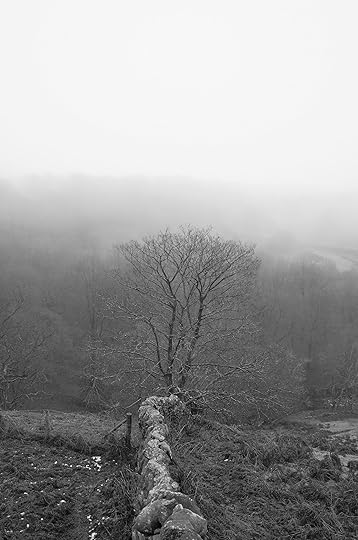
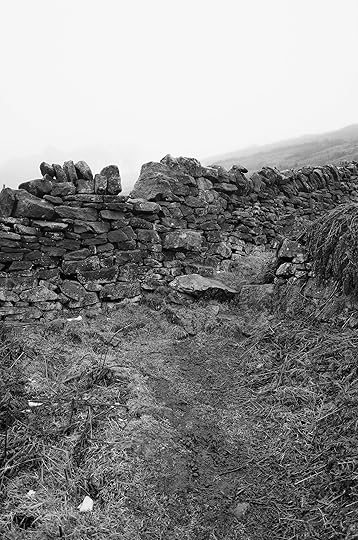
Looking at these contemporary images, seen through fences and barriers, it’s difficult to ignore what the English landscape leaves out. If we were to follow the story of this stile horizontally, rather than vertically—not moving back through the past, but staying in the present and reaching out across the landscape and the world—what would we see? Starting right here, to watch a couple help one another over the stile one winter afternoon. They’re gray-haired, married, able-bodied, white; dressed, expensively, in Scandinavian waterproofs. Any time you go out for a hike in the English countryside, a gap opens up between the historical and legal fact of the right of access, and the political and geographical realities that determine who actually visits or inhabits any given landscape. The barriers that exist now, through which access to a landscape is granted or denied, have become more sinister because they are concealed. Ancient privileges and dispossessions have gone into hiding but they’re still around. Rural England is overwhelmingly white and right-leaning, and it’s poorly served by public transport. If you live in London or Manchester it’s easier and often cheaper to travel to Amsterdam or Mallorca, than to reach some closer part of rural East Anglia or the Lake District, without private transport. Barriers that sustain inequality in the contemporary world are no longer as simple as the wooden posts and lengths of wire that pen the sheep. Perhaps this is why there was a powerful dreaminess and longing in the way Trump used to fantasize about his wall. The thing that was remarkable, in the way he described it, was that his imagination was so literal—the height and dimensions, the building materials he would use, the itemized bills and who would pay them. The wall manifested a desire that ’s felt by many—not only those who wanted it—to go back into a world in which material force is the first currency, there are none of the receded or virtual barriers and passageways that shape realities now.
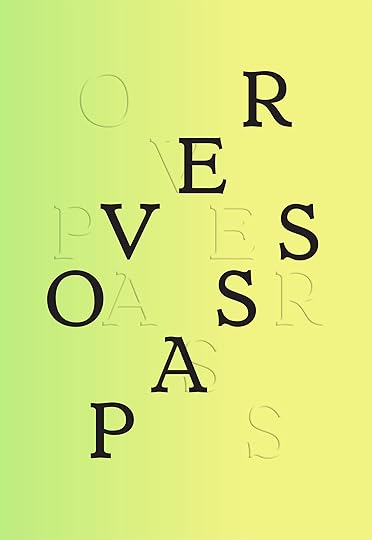 Sam Contis: Overpass 60.00
Sam Contis: Overpass 60.00 $60.00Add to cart
[image error] [image error]
In stock
Sam Contis: OverpassPhotographs by Sam Contis. Text by Daisy Hildyard. Designed by Julian Bittiner.
$ 60.00 –1+$60.00Add to cart
View cart Description Overpass is about what it means to move through the landscape. Walking along a vast network of centuries-old footpaths through the English countryside, artist Sam Contis focuses on stiles, the simple structures that offer a means of passage over walls and fences and allow public access through privately owned land. In her immersive sequences of black-and-white photographs, they become repeating sculptural forms in the landscape, invitations to free movement on one hand and a reminder of the history of enclosure on the other. Made from wood and stone, each unique, they appear as markers pointing the way forward, or decaying and half-hidden by the undergrowth. An essay by writer Daisy Hildyard contextualizes this body of work within histories of the British landscape and contemporary ecological discourses. In an age of rising nationalism and a renewed insistence on borders, Overpass invites us to reflect on how we cross boundaries, who owns space, and the ways we have shaped the natural environment and how we might shape it in the future. DetailsFormat: Paperback / softback
Number of pages: 224
Number of images: 122
Publication date: 2022-11-15
Measurements: 6.75 x 9.75 x 0.94 inches
ISBN: 9781597115391
“The work reveals something subtly subversive about our access to the countryside”—Josh Lustig, The Financial Times
ContributorsSam Contis (b. 1982) lives in California. Her work has been exhibited widely, including at the Barbican Centre, London; Carnegie Museum of Art, Pittsburgh; Carré d’Art, Nîmes; and MoMA, New York. She is the recipient of a 2022 Guggenheim Fellowship and the author of Deep Springs (2017) and Day Sleeper (2020).
Daisy Hildyard (b. 1984) is author of two novels—Emergency (2022) and Hunters in the Snow (2013)—and one work of nonfiction, The Second Body (2017). She lives in North Yorkshire.
Moving along the hedgerow and into the fields and woods, we track away from the couple and they disappear on the other side of the stile. A new set of subjects gains presence: small, shadowy, all nonhuman, some barely corporeal. The fencepost to one side of the stile is a growing pole for wild carrot plants, which lean on it as they move towards the light. The stile ’s wet, soft plank is food to the fungus that cover its surface in orange spots. The stake in the fence offers delicious relief for a cow’s itchy back on a hot afternoon. Moss and lichen creep over dank areas on a stone ’s surface. Spaces between loose stones in the wall are tunnels used by field mice and a weasel. A kestrel sometimes lands on the telegraph wire that runs above the stile, where it can see things moving through the opening below. A hole in the wire, low down in the fence, is the place where a lamb tried to climb through; got stuck and struggled, tangling his wool tighter until the barbed edge tore his skin. An elm sapling cranes over the gap in the hedge, its branches extended to catch spare light. Around the stile there ’s a patch of mud where feet have worn away the grass, and this is the fragile place where the rare, specialized, increasingly endangered flora of the footpath thrive in mud, shade, and the pressure of feet. The area below the stile is an underpass for badgers and foxes. The tall stone wall is a barrier to an extended family of rabbits, who make room and clear passage for their exploding population by undermining it.
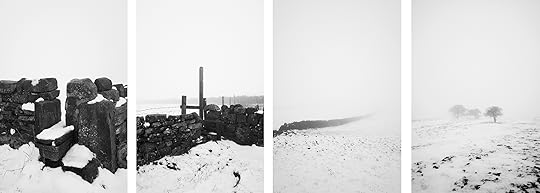 var container = ''; jQuery('#fl-main-content').find('.fl-row').each(function () { if (jQuery(this).find('.gutenberg-full-width-image-container').length) { container = jQuery(this); } }); if (container.length) { const fullWidthImageContainer = jQuery('.gutenberg-full-width-image-container'); const fullWidthImage = jQuery('.gutenberg-full-width-image img'); const watchFullWidthImage = _.throttle(function() { const containerWidth = Math.abs(jQuery(container).css('width').replace('px', '')); const containerPaddingLeft = Math.abs(jQuery(container).css('padding-left').replace('px', '')); const bodyWidth = Math.abs(jQuery('body').css('width').replace('px', '')); const marginLeft = ((bodyWidth - containerWidth) / 2) + containerPaddingLeft; jQuery(fullWidthImageContainer).css('position', 'relative'); jQuery(fullWidthImageContainer).css('marginLeft', -marginLeft + 'px'); jQuery(fullWidthImageContainer).css('width', bodyWidth + 'px'); jQuery(fullWidthImage).css('width', bodyWidth + 'px'); }, 100); jQuery(window).on('load resize', function() { watchFullWidthImage(); }); const observer = new MutationObserver(function(mutationsList, observer) { for(var mutation of mutationsList) { if (mutation.type == 'childList') { watchFullWidthImage();//necessary because images dont load all at once } } }); const observerConfig = { childList: true, subtree: true }; observer.observe(document, observerConfig); }
var container = ''; jQuery('#fl-main-content').find('.fl-row').each(function () { if (jQuery(this).find('.gutenberg-full-width-image-container').length) { container = jQuery(this); } }); if (container.length) { const fullWidthImageContainer = jQuery('.gutenberg-full-width-image-container'); const fullWidthImage = jQuery('.gutenberg-full-width-image img'); const watchFullWidthImage = _.throttle(function() { const containerWidth = Math.abs(jQuery(container).css('width').replace('px', '')); const containerPaddingLeft = Math.abs(jQuery(container).css('padding-left').replace('px', '')); const bodyWidth = Math.abs(jQuery('body').css('width').replace('px', '')); const marginLeft = ((bodyWidth - containerWidth) / 2) + containerPaddingLeft; jQuery(fullWidthImageContainer).css('position', 'relative'); jQuery(fullWidthImageContainer).css('marginLeft', -marginLeft + 'px'); jQuery(fullWidthImageContainer).css('width', bodyWidth + 'px'); jQuery(fullWidthImage).css('width', bodyWidth + 'px'); }, 100); jQuery(window).on('load resize', function() { watchFullWidthImage(); }); const observer = new MutationObserver(function(mutationsList, observer) { for(var mutation of mutationsList) { if (mutation.type == 'childList') { watchFullWidthImage();//necessary because images dont load all at once } } }); const observerConfig = { childList: true, subtree: true }; observer.observe(document, observerConfig); }Contis’s subjects are small but tough: stalks, seeds, pieces of grit, thorns, hairs tangled into the wire fence. I thought of Albrecht Dürer’s Great Piece of Turf, a modest sixteenth-century watercolor of a clump of weeds and grasses. Dürer’s image could easily be described as photographic realism, but his attention amplifies his subject, so that the spent dandelion buds and thin blades of grass become spectacular, hyperreal. Contis’s images are like that: her subjects gain force when seen with this intensity. These are quiet places, but their quietness is suggestive. The worn paths and spaces between walls trace presence. The vegetation is lush, tangled, profuse. Everything leans into everything else, germinating, growing, subsiding, collapsing, and then regenerating. A landscape comes into being through encounters between soils and microbes, birds and chemicals, lichens and moisture, plants and mammals. A million different infrastructures, created by many species and successive climates, all built and perpetually building up into and against one another. You can look at any landscape like that, too: to find the many living storylines that come together in the present. Some are apparent, some are hidden, but they all make it what it is. Between your feet on the sidewalk there is a small basement where young men sleep on rotating shifts. From the top deck of the bus you might glimpse a lonely woman inside the state palace, sitting out long days behind drawn curtains, or the gulls on the palace kitchen roof, waiting for the food waste to be put out. Sunbathing on a suburban lawn on a hot afternoon you can feel, behind the back of your head, disturbed earth where a fox was clawing the ground for worms last night. The stile draws many different environments and experiences together, in the same place: it’s a stile, a scratching post, a gate, and a barrier. It’s a place to find something to eat, a hiding place and an escape route. It’s a gap, brought into sharp focus—emptiness, tended for a human body to pass.
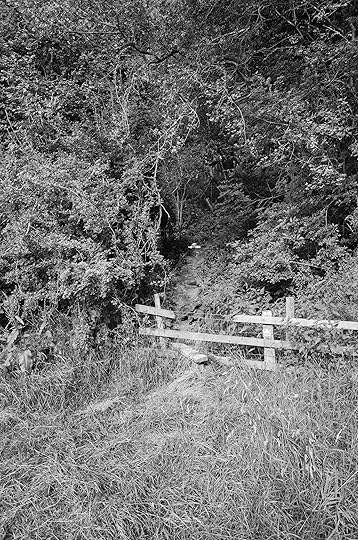 All photographs Sam Contis, Untitled (from the series Overpass), 2020-2022, from Overpass (Aperture 2022)
All photographs Sam Contis, Untitled (from the series Overpass), 2020-2022, from Overpass (Aperture 2022)Courtesy the artist

The landscapes themselves, spacious and closely inhabited, pass on too: they extend over the edge of the photograph and beyond the horizon. The plastic bag caught in the hedge here blows into a stream and floats downriver, out into the North Sea, drawn by circulating currents into the Atlantic and then the Pacific, where it joins other plastic bags all floating in an island together through turquoise waters. This tuft of reedy grasses is closely related to the marsh plants that emerge through the snowmelt in southern Siberia each spring. The wire fence that runs on either side of the stile runs on between the posts and away into the distance. The same wire fencing cross-hatches the moors and crosses down into the Dales. It runs through fields. It runs around a prison and a livestock market and runs on through more fields. It runs around migrant detention facilities and gated residential communities. It guards the train tracks at the entrance to the channel tunnel in Kent and resurfaces at its exit in Normandy. The fencing runs, intermittently, across Europe. Where the land meets the ocean there is a gap in the fence, and on the other side of the ocean, right there at the water’s edge, the fencing begins again. This same material—thick, square-hatched wire—runs riot around the freeways and border kiosks where El Paso meets Ciudad Juárez, it divides Syria from Turkey, Ukraine from Russia, Pakistan from Afghanistan, it has a field day on the Gaza Strip and runs on, circumnavigating the planet.
This essay originally appeared in Sam Contis: Overpass (Aperture, 2022).
Sam Contis: Overpass is on view at Klaus von Nichtssagend Gallery, New York, October 27–December 16, 2023
December 1, 2023
An-My Lê on Vietnam, the Chaos of War, and the Tangibility of Memory
This interview was originally published in An-My Lê: Small Wars (Aperture, 2005).
An-My Lê was born in Vietnam in 1960 and came to the United States as a political refugee at age fifteen. She received a grant to return to her homeland just after US Vietnamese relations were formally restored. Lê went back several times between 1994 and 1997, creating stunning large-format, black-and-white photographs, expertly printed in a middle-gray scale reminiscent of Robert Adams. These images do not address the war specifically, but rather represent Lê’s attempt to reconcile memories of her childhood home with the contemporary landscape that now confronted her. The war haunts the images in eerie metaphors: dozens of kites double as dive-bombing planes; crop fires and construction sites recall napalm and mass graves.
In 1999 Lê began working with Vietnam War reenactors in North Carolina who restage battles as well as the training and daily life of soldiers—both Viet Cong and American GIs. For four summers, she not only photographed but also participated in battles of the Vietnam War restaged on her adopted American soil. Relating to both documentary and staged photography, the work is aesthetically rigorous and conceptually challenging. Soldiers at rest give themselves up to portraiture, while battle compositions recognizable from classic war photojournalism possess the qualities of a dream. Most recently, Lê has photographed exercises performed by the US military in the American desert in preparation for maneuvers in Iraq and Afghanistan. Lê’s works elucidate the complicated nature of the aesthetics and spectacle of war. But perhaps the most intriguing conceptual component is Lê’s own relationship to the subjects and the landscapes she presents. —The Editors, from Aperture Conversations: 1985 to the Present (Aperture, 2018)
Hilton Als: For Americans born in the 1960s, Vietnam, or, rather, the “issue” of Vietnam—the “problem” of Vietnam—was something that we always lived with: on television, in newspapers, and the rest. But we did not necessarily understand what “the war” in Vietnam was about. Can you provide a thumbnail sketch of the historical and political background of your country, and the effect its invasions—by the French, by Americans—had on you, your family, and your environs?
An-My Lê: My mother’s family—much more dominant in my life than my father’s—was from Thai Binh, a small town near Hanoi. They lived through the Japanese occupation and under Communist rule. My mother grew up in Hanoi but for higher education traveled to Paris in the 1950s. In 1954, while she was still in Paris, my grandmother moved to Saigon when the country was divided at the 17th parallel and the Communists took over the North. My mother met my father and married him in Paris, where my older brother was born. They eventually returned to Saigon, where I was born.
We lived through many political coups, years of fear and uncertainty, as the Viet Cong would shell the city randomly every night. War became a routine, something we accepted as part of our lives, until 1968 when the Communists attacked Saigon during the Tet celebrations. They took over the American embassy and the radio station behind our house. This offensive sent shock waves through the community. We all felt vulnerable. My parents decided we had to leave Vietnam to find shelter, even if it was for a short while. Fortunately my mother received a scholarship to work on a Ph.D. at the Sorbonne. We were able to move to Paris (my father stayed behind) and lived there for five years while she completed her Ph.D. We returned to Saigon in 1973, only to see the country fall to the Communists in 1975. We were fortunate to be evacuated by the Americans that April. In spite of our ties to France, my parents decided to remain in the United States because it seemed to offer more opportunities at that time. For better or for worse, my life and those of the last three generations of my family have been underscored by the complicated political history of Vietnam.
 An-My Lê, Untitled, Ho Chi Minh City, 1995, from the series Viêt Nam
An-My Lê, Untitled, Ho Chi Minh City, 1995, from the series Viêt Nam  An-My Lê, Untitled, Son Tay, 1998, from the series Viêt Nam
An-My Lê, Untitled, Son Tay, 1998, from the series Viêt Nam Als : Your photographs deal so specifically with ideas of landscape; do you work from your memory of the Vietnamese landscape to examine your feelings about it, or to imagine what its colonizers might have felt about it?
Lê: Over the years, disconnected from the place and with only a handful of family pictures available, I had come to construct my own notions of a Vietnam drawn mostly from memories, but also from photojournalism and Hollywood films. In 1994 when I returned for the first time, I realized that I was not particularly interested in reexamining contemporary Vietnam. Instead of seeking the real, I began
making photographs that use the real to ground the imaginary. The landscape genre or the description of people’s activities in the landscape lent itself well to this way of thinking.
My attachment to the idea of landscape is a direct extension of a life in exile. The sense of home has to do with the importance of food and location, and it is all connected to the land. Vietnam has always been (and still is somewhat) an agricultural society. Its culture and history are deeply rooted in its land. Growing up I did not know much of the country, actually not much outside of the capital and a few other large cities in the South, since it was difficult and unsafe to travel to the countryside during wartime. Especially when we lived in Paris and later in the U.S., I came to fantasize about this traditional agricultural way of life. Through folktales, legends, and many stories I heard from my mother and grandmother, I imagined a life that was truly magical but at the same time real and grounded—a life of hardship, working the land, with threats of war and disease but also the joys of living close to nature in a large, close-knit family.
Vietnamese society and in a way its people (especially in the North but partly in the South as well) have also been deeply scarred by years of immobilization and deprivation during the war and during the earlier part of the reunification. In the meantime, in spite of the destruction, the landscape seems to have recovered and, to someone living in exile, has managed to retain and exude that sense of culture and history that can signal that one has arrived home.
The idea of the landscape and its climate was also such an important topic when the Vietnam War was covered in military analyses, news reports, and Hollywood films. The word terrain was often mentioned: how treacherous it was, how the enemy was better prepared for it and had a greater advantage. Working with the Vietnam War reenactors I became fascinated by the significance of the landscape in terms of its strategic meaning. Every hilltop, bend in the road, group of trees, and open field became a possibility for an ambush, an escape route, a landing zone, or a campsite.
In spite of the influence of Vietnamese culture on my life, I am also a product of colonial attitude, having grown up in a Francophile home and then later having lived in France. Eugène Atget has been a great inspiration—not only his work, which brilliantly captures the notions of change and transition in a place and a culture, but his entire life and working process.
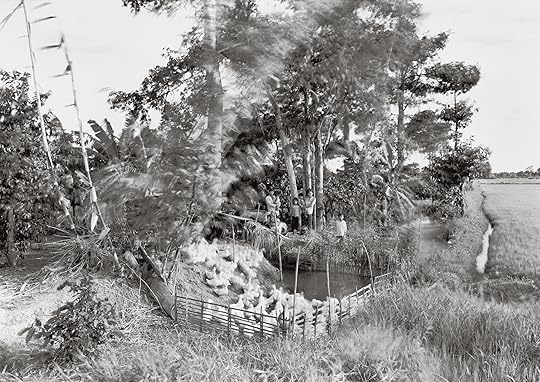
An-My Lê, Untitled, Mekong Delta, 1994, from the series Viêt Nam
var container = ''; jQuery('#fl-main-content').find('.fl-row').each(function () { if (jQuery(this).find('.gutenberg-full-width-image-container').length) { container = jQuery(this); } }); if (container.length) { const fullWidthImageContainer = jQuery('.gutenberg-full-width-image-container'); const fullWidthImage = jQuery('.gutenberg-full-width-image img'); const watchFullWidthImage = _.throttle(function() { const containerWidth = Math.abs(jQuery(container).css('width').replace('px', '')); const containerPaddingLeft = Math.abs(jQuery(container).css('padding-left').replace('px', '')); const bodyWidth = Math.abs(jQuery('body').css('width').replace('px', '')); const marginLeft = ((bodyWidth - containerWidth) / 2) + containerPaddingLeft; jQuery(fullWidthImageContainer).css('position', 'relative'); jQuery(fullWidthImageContainer).css('marginLeft', -marginLeft + 'px'); jQuery(fullWidthImageContainer).css('width', bodyWidth + 'px'); jQuery(fullWidthImage).css('width', bodyWidth + 'px'); }, 100); jQuery(window).on('load resize', function() { watchFullWidthImage(); }); const observer = new MutationObserver(function(mutationsList, observer) { for(var mutation of mutationsList) { if (mutation.type == 'childList') { watchFullWidthImage();//necessary because images dont load all at once } } }); const observerConfig = { childList: true, subtree: true }; observer.observe(document, observerConfig); }Als : When did you begin your career in photography? And why?
Lê: It began by chance. I never felt I had a calling for anything in particular but was fairly good in the sciences, so I chose to study biology in college in preparation for a career in medicine. I was not accepted to any of the medical schools I applied to in my senior year, and it was suggested that I do biomedical research, publish, pursue a master’s degree in biology, and reapply. While completing a master’s at Stanford University, I wanted to take a drawing class to fulfill a nonscience requirement. It was full, so I chose photography instead. To my surprise, the class completely took over my life. If I was not photographing, I was in the darkroom printing until late. I loved every minute of it.
What drew me at first was simply how the camera gave me license to go out and discover more of the world; it taught me about people and places and about myself as well. The immediacy of responding to a situation when you snap your photo, the opportunity to be more analytical later when you edit the pictures, and the blend of the intuitive and the cerebral was very satisfying. Whatever a calling could be, it seemed to me that this was it.
In 1986 I moved back to Paris, where I floundered for a few months until Laura Volkerding, my teacher from Stanford, arrived. She came to document the casting of Rodin’s Gates of Hell that had been donated to Stanford by Gerald Cantor. It was to be cast using the lost wax method at a foundry that belongs to a guild of craftsmen called the Compagnons du Devoir du Tour de France. The guild dates back to the Middle Ages and is comprised of various métiers: metalwork, masonry, stone-cutting, and carpentry/woodwork. These craftsmen were responsible for the construction of most churches and cathedrals in France. Now they do a lot of restoration work.
It turned out that the guild needed a staff photographer, and Laura referred me. I spent the next four years touring France and working for them. I was completely unprepared for the demands of this job; I quickly learned how to use a view camera on my own, how to use color film, how to light a space. I underwent a lot of trial and error. It was a great opportunity for me to travel and learn about the art and architecture of France, but more importantly, working for the guild deeply affected the way I saw things and represented them photographically. It was always about seeing clearly: showing the curve of a stairwell in an unencumbered way, the texture of this marble or that wood, drawing the volume of a vault in the most readable way. I also learned to respect the materiality of things (the nobility of stone, metal, and wood). I developed an appreciation of all things well made and a love for everything about the tradition of the craftsman and his work.
I moved back to the U.S., to New York City, in 1990. I finally realized that I did not want to be a commercial photographer and applied to graduate school. I then went to the Yale School of Art for my MFA. That’s when I began to grapple with the scope of a possible life as a visual artist.
 An-My Lê: On Contested Terrain 52.00 The first comprehensive survey of the Vietnamese American artist, featuring works from Lê’s series inlcuding Viêt Nam, Small Wars, 29 Palms, Events Ashore, and more.
An-My Lê: On Contested Terrain 52.00 The first comprehensive survey of the Vietnamese American artist, featuring works from Lê’s series inlcuding Viêt Nam, Small Wars, 29 Palms, Events Ashore, and more. $65.00 $52.00Add to cart
[image error] [image error]
In stock
An-My Lê: On Contested TerrainPhotographs by An-My Lê. By Dan Leers. Text by Lisa Sutcliffe and David Finkel. Interviewer Viet Thanh Nguyen. Interviewee An-My Lê.
$ 52.00 –1+$65.00 $52.00Add to cart
View cart Description An-My Lê: On Contested Terrain is the first comprehensive survey of the Vietnamese American artist, published on the occasion of a major exhibition organized by Carnegie Museum of Art, Pittsburgh.Drawing, in part, from her own experiences of the Vietnam War, Lê has created a body of work committed to expanding and complicating our understanding of the activities and motivations behind conflict and war. Throughout her thirty-year career, Lê has photographed noncombatant roles of active-duty service members, often on the sites of former battlefields, including those reserved for training or the reenactment of war, and those created as film sets.
This publication includes selections from her well-known series Viêt Nam, Small Wars, 29 Palms, and Events Ashore, in addition to never-before-seen images, including recent photographs from the US-Mexico border, formative early work, and lesser-known projects. Essays by the organizing curator Dan Leers and curator Lisa J. Sutcliffe, as well as a dialogue between Lê and Pulitzer Prize–winning author Viet Thanh Nguyen, address the ways in which Lê’s quiet, nuanced work complicates the landscapes of conflict that have long informed American identity.
Copublished by Aperture and Carnegie Museum of Art Details
Format: Paperback / softback
Number of pages: 204
Number of images: 128
Publication date: 2020-06-16
Measurements: 9.25 x 10.5 x 0.8 inches
ISBN: 9781597114813
An-My Lê’s work has been exhibited at such venues as the Museum of Modern Art, New York; Museum of Contemporary Photography, Chicago; and San Francisco Museum of Modern Art. Lê has received many awards, including fellowships from the New York Foundation for the Arts (1996), John Simon Guggenheim Memorial Foundation (1997), and MacArthur Foundation (2012). She is a professor in the Department of Photography at Bard College.
Dan Leers is a curator of photography at the Carnegie Museum of Art, Pittsburgh, and organized the traveling exhibition An-My Lê: On Contested Terrain. Previously, Leers was the Beaumont and Nancy Newhall Curatorial Fellow in the Department of Photography at the Museum of Modern Art, and an independent curator and consultant to the Samuel Dorsky Museum of Art (New Paltz, New York), Philadelphia Photo Arts Center, and 2013 Venice Biennale.
Lisa Sutcliffe is the Herzfeld Curator of Photography and Media Arts at the Milwaukee Art Museum. From 2007 to 2012, she served as assistant curator of photography at the San Francisco Museum of Modern Art. Prior exhibitions include Marking Time in Photography and Film (2013), The Provoke Era: Postwar Japanese Photography, and Photography Now: China, Japan, Korea (both 2009).
David Finkel is a journalist and author whose honors include a MacArthur fellowship and a Pulitzer Prize.
Viet Thanh Nguyen is author of The Sympathizer (2015), which received the Pulitzer Prize for Fiction, among other awards. He is a recipient of fellowships from the John Simon Guggenheim Memorial Foundation and MacArthur Foundation. Nguyen is a professor and the Aerol Arnold Chair of English at the University of Southern California.
Als : After you began photographing, did you immediately establish long-range plans in terms of what you wanted to accomplish with it, such as your studies of the reenactors in “their” recreated Vietnam, or is it all a process of discovery?
Lê: It was all subconscious. I am rather amazed at how the three projects have come together as a sort of trilogy. Going into a project, I never know the photographs I will end up making. It is a process of discovery, and I try to stay as open-minded as possible. For me it is first about learning something about the world, about myself. It is a little frightening starting a project in such a way and not feeling prepared, but so much of it is about problem solving. I am always asking myself what it is I am trying to find out about the situation, about the people: What does it all mean in terms of a cultural and historical context? What are my personal issues here? What is the point? Is it worthwhile? What kind of photographs could attempt to broach and perhaps begin to answer those questions?
The Vietnam project happened in 1993 after graduation from Yale, where I had been encouraged to do work that was more personal and autobiographical. The U.S. was loosening its diplomatic and economic relations with Vietnam. I saw the opportunity to return to Vietnam, which is something we never thought we could do when we left in 1975. The question of war was not central to the photographs I made in Vietnam. Only at the conclusion of this project did I feel ready to tackle that issue head-on. I had to also ask myself: how do you address something that has happened so long ago? I felt stumped; other than working with press images or trying to memorialize the event, what could I do?
Some of what I did in Vietnam, where I learned how to place people in the landscape, prepared me for the subsequent series. I learned that it is all about scale. How far back can you go to get a great drawing of the land, while still being able to suggest the activity of the people?
Als : How did you find out about the “reenactments”? And what was your first response to them? Did you have to go through a great deal of bureaucratic rigmarole to gain access to photograph?
Lê: I had heard about these small, low-key groups of men who reenact the Vietnam War. After some research on the Internet, I found one group based in Virginia and contacted them. It was smaller and more exclusive when I first worked with them than it is now. Gaining an invitation to the first event involved a lot of back and forth emailing with the founder. Once I was there, it became a lot easier because it was clear I wanted to help contribute to the event as best as I could while making my photographs.
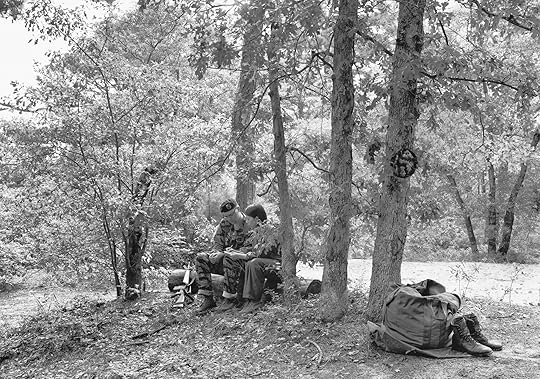 An-My Lê, Lesson, 1999–2002, from the series Small Wars
An-My Lê, Lesson, 1999–2002, from the series Small Wars 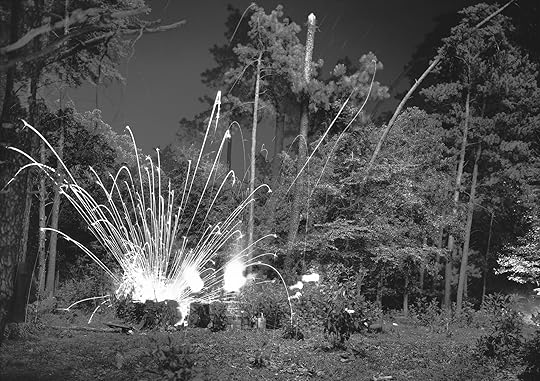 An-My Lê, Explosion, 1999–2002, from the series Small Wars
An-My Lê, Explosion, 1999–2002, from the series Small Wars Als : Did you actually become involved in any of the war games that you documented?
Lê: Yes, that’s the requirement for attending the events, which last three days. The reenactors are obsessed with re-creating a situation that is seamless. So it is crucial that everything—from the erection of Viet Cong villages and GI firebases to a haircut and the smallest details in a uniform—be of the period. To fit in I often played a VC guerilla or North Vietnamese army soldier. I did what I needed to do to find the right VC uniform, sandals, rucksacks, and hammock. To go on the GI side, I would become a “Kit Carson” scout, a turncoat who would inform the Americans.
The reenactors truly enjoyed having me there. I added to the authenticity of the event, and they would often concoct elaborate scenarios around my character. I have played the sniper girl (my favorite—it felt perversely empowering to control something that I never had any say in). I have been the lone guerilla left over in a booby-trapped village to spring out of a hut and ambush the GI platoon. I have played the captured prisoner.
Initially I was terrified at the prospect of spending three days with these unknown men on a hundred- acre private property ten hours from New York City. My friend Lois Connor accompanied me. It turns out the reenactors are straightforward, conservative men who are so dedicated to this hobby. It’s an obsession for many of them—an obsession with collecting and trading all the paraphernalia, meshed with an interest in military history. Reenacting events are an opportunity for them to put their stuff to use, meet other men who share their interest, and live in a kind of virtual reality or travel back in time, all while having an adventure with their buddies.
From many conversations, I also learned that their interest in the military and in Vietnam stemmed from complicated personal histories. These men came from all sorts of professions. A few had been in the military, but rarely did they have experience in a combat situation. Some had missed their calling for the military and were steered by their parents toward law school or business school; some had
lost a brother in Vietnam. I met at least two men whose fathers had distinguished themselves in combat in Vietnam. It seemed that many of them had complicated personal issues they were trying to resolve, but then I was also trying to resolve mine. In a way, we were all artists trying to make sense of our own personal baggage.
Als : How did you develop the topic of the third series?
Lê: In 2002 and 2003 the U.S. was gearing up for the war in Iraq and Afghanistan just as I finished working with the reenactors. I was extremely distressed the day the war began in March 2003. Strangely enough, my heart did not go out immediately to the Iraqi civilians, but to our troops. I first thought of the scope and impact of war on them and their extended families. I am not categorically against war, but I feel the decision makers and policy makers have no idea how devastating the effects of war can be. Remembering my own experience, I also felt completely vulnerable. War just seemed unreasonable and unjustified in this case.
Trying to make sense of all this, I decided I had to find a way to go to Iraq. It was, unfortunately, too late to become embedded. I came across a photograph of the Marines training in the California desert in 29 Palms that looked just like parts of Afghanistan and Iraq. I immediately knew this place held great potential for a new project. Working there would follow with the idea of the reenactment and training for something. I was also drawn by the concept of simulations that are once removed but allow one to see and understand the real thing with clarity and perhaps more objectivity.
Once I began photographing at the Marine Air Ground Combat Center in 29 Palms, it became obvious that my pictures stand in complete opposition to combat photography. We are dealing with parallel subjects, but the outcome—the meaning—is completely different. In the case of combat photography, the die is cast. The photographer is thrown into a conflict where his work is about capturing the action or the aftermath. Chaos, he horrific violence of the moment, and the obvious risk incurred by the photographer in this situation all play into producing an image with a brutal if not blinding immediacy. Conversely, working with the military in training allows for breathing room. What jumps out for me is the way in which the magnitude of the firepower used—from artillery weapons to mortars, C-4 explosives, and air-delivered bombs—and its destructive potential, becomes muted and transformed as it is photographed in these exercises in the middle of a tranquil desert. One can then step back and ponder the larger issues of war. For me the question is not only are we militarily ready, but also are we politically, morally, and philosophically prepared? No, we are not. This project is an impassioned plea for a much-needed consideration of the consequences of war.
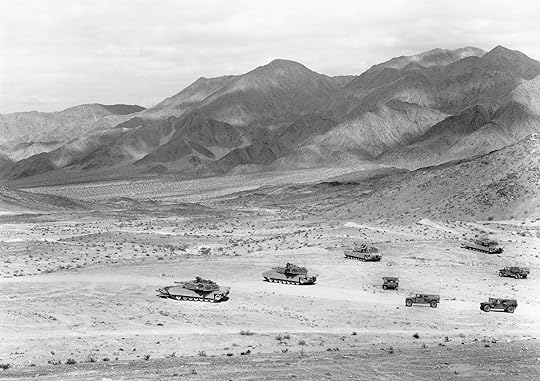 An-My Lê, Mechanized Assault, 2003–4, from the series 29 Palms
An-My Lê, Mechanized Assault, 2003–4, from the series 29 Palms 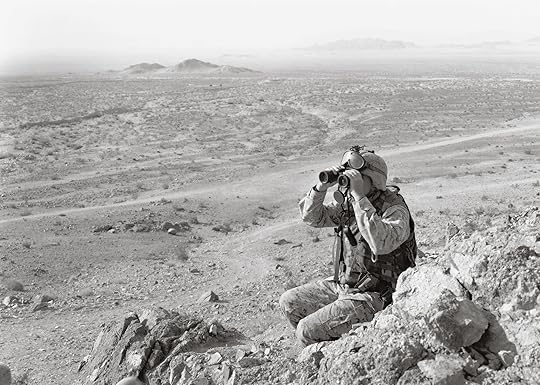 An-My Lê, Colonel Greenwood, 2003–4, from the series 29 Palms
An-My Lê, Colonel Greenwood, 2003–4, from the series 29 Palms Als : Have you looked at a great many war photographs? And do you agree with many photography critics when they say that photographs of war “depersonalize” pain? By working with “staged” coups and so on, does that distance Vietnam for you?
Lê: I am a great admirer of the nineteenth-century war photographers, but I also respect the more contemporary ones: Robert Capa, Larry Burrows, James Nachtwey, Gilles Peress, Tyler Hicks. I have studied the work of many North Vietnamese combat photographers. In a way I feel closer to them and the nineteenth-century European photographers because of the importance they give the landscape in their work.
I do think the current photos of war from Iraq and Afghanistan (except for the Abu Ghraib pictures, which were not made by professional photographers) are a lot more tame and feel more glossy than anything ever made in Vietnam, but it’s also true that our hearts are colder these days from having been bombarded with one agonizing and horrific picture after another. In the end I think it is the cumulative effect of the images over time that will have as much effect on us as the single image of the young Vietnamese girl burned by a napalm bomb.
What are the effects of war on the landscape, on people’s lives? How is war imprinted in our collective memory and in our culture?
The more contemporary photographs that capture the immediate moment certainly convey the devastation and pain, but they are usually so horrific one has to turn away in shock—they go more to your gut than to your head. In the end these photographs certainly remind us we are at war, but how thought provoking are they?
I am more interested in the precursor to war and its psychic aftermath. There is something about addressing the preparation for war or the memory of war itself that allows one to think about the larger issues of war and devastation. Again, how prepared are we? And what are the effects of war on the landscape, on people’s lives? How is war imprinted in our collective memory and in our culture? How does it become enmeshed with romance and myth over time (i.e., for Hollywood and for the reenactors)? My concern is to make photographs that are provocative in response to the reality of war while challenging its context.
Als : Of course, all photographs lie. I consider pictures to be metaphors for actual events and the people in them. For me, photographs capture something — an essence — of an event or a person, but selectively. Given the pictorial and emotional scope of your work, how do you set about capturing such a large portion of our collective political history?
Lê: Great landscape photography has a literal but also a metaphorical scope to it (Atget, Robert Adams, etc.). There is something about seeing people’s lives (or the suggestion of it) splayed across a landscape that can be breathtaking and unforgettable. There is no escaping the specificity of photography, but I aspire to achieve a certain lyrical objectivity. It is more about patterns of behavior than the specificity of it, which perhaps allows for a larger understanding of history and culture. August Sander and Judith Joy Ross manage to do this through portraiture. Here it is landscape photography that gives me that opportunity. It allows for descriptive possibilities. You can ascribe character to a landscape; you can suggest its usage. It is like a stage and, most importantly, I try to not let the people and their activities completely take over.
Related Items
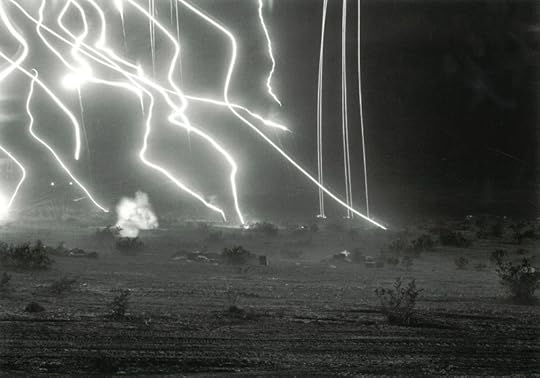
Night Operations, 2003-4
Shop Now[image error]
Untitled, Thanh-Hoa, 1998
Shop Now[image error]
Aperture 251
Shop Now[image error]Als : Why do you shoot in black and white? And what kind of camera do you use?
Lê: I always consider all possible tools at the beginning of a project (color or black-and-white film; small-, medium-, or large-format cameras). But so far, the 5-by-7-view camera has been my tool of choice, in spite of its inconveniences. It provides a great large negative full of details. It allows for a certain clarity and descriptive sharpness. Above all, in an image from 5-by-7 negatives or larger, one can sense the volumes of air moving between things and inside spaces. I tend to prefer black and white because I am very interested in the way things are “drawn.” This is much more apparent in black and white, where the palette is reduced simply to black, white, and various shades of gray. The world as seen in black and white also feels one step removed from its reality, so it seems fitting as a way to conjure up memory or to blur fact and fiction. Most of my memories of the Vietnam War, aside from what I witnessed firsthand, derive from black-and-white television news footage and black-and-white newspaper images.
The 5-by-7 view camera is very clunky because of its size, weight, numerous accessories, and the need for a tripod. You can’t work that spontaneously. All shots have to be somewhat premeditated and directed, especially those involving people, because of slow shutter speeds and delay between framing the image and closing the shutter/cocking the lens/exposing the film. A lot of this accounts for the pictures in all my projects seeming staged. There were situations where I had to photograph what was in front of me, but there were also times when I had an idea and went about constructing the scene from scratch (using the setting and prop of choice, choosing the people, and directing them). Working this way—either planning something from scratch or anticipating something before it happens—feels much more cerebral. We often say that photographers hide behind their cameras. In a way the view camera has provided me with multiple shields from the painful memory of war, while allowing me to come as close as possible to try to understand it.
Advertisement
googletag.cmd.push(function () {
googletag.display('div-gpt-ad-1343857479665-0');
});
Als : Some of your pictures look like film stills; have you looked at a lot of narrative and documentary films about Vietnam in preparation for your work?
Lê: If they resemble film stills, most are more in the vein of the establishing shots—those that situate everything. I have always looked at Vietnam War films. (Well, only starting in the mid-eighties—it was too soon and still somewhat too traumatic before then.) I was interested in seeing how something that I knew so well, something that affected me so deeply, was portrayed on screen. Watching these movies was also the only opportunity to get a glimpse of “Vietnam.” Even when another country or Chinese actors were used as stand-ins, any suggestion of the country, its life, and its people satisfied my curiosity (and tempered my homesickness and yearning). The Anderson Platoon, a documentary by Pierre Schoendorffer, and of course Apocalypse Now, Full Metal Jacket, Casualties of War, Platoon—the first three are my favorites. More recently, I have seen these movies with a completely different interest in mind. I am interested in the Vietnam of the mind. It’s fascinating to me how all these other countries (Thailand and the Philippines mostly) are stand-ins for Vietnam and how the landscape has become a character.
I have been paying attention to how the cinematography is used to conjure up the past. The idea of the period piece is an interesting conceit. Many people find the activities of the Vietnam War reenactors very disturbing. Comparatively, Hollywood’s obsession with the Vietnam War and its numerous, painstaking “reenactments” on film seem completely reasonable. For me the fascination lies in the dialogue these two worlds establish between experience and chaos versus memory and storytelling.
These days, young Americans are first introduced to the subject of Vietnam, the Holocaust, or World War II by movies like Schindler’s List, Saving Private Ryan, or Apocalypse Now, and only later (or maybe never) will they learn the hard historical facts in textbooks in a classroom situation. From the start, there is a blurring of fact and fiction that’s fascinating.
I draw my motivations for these projects from personal memories and from both a fascination and an aversion for anything that has to do with war and destruction, for the military, paramilitary fringe groups. Mix into that an interest in mediated images in popular culture—all of these influence the way my pictures look: they could be as much about my memory of GIs walking down Tu Do street in Saigon as an echo of the depiction of the Air Cavalry machos in Apocalypse Now. I consider my work an inquiry into the literal representation of things vs. depictions that live in popular imagination.
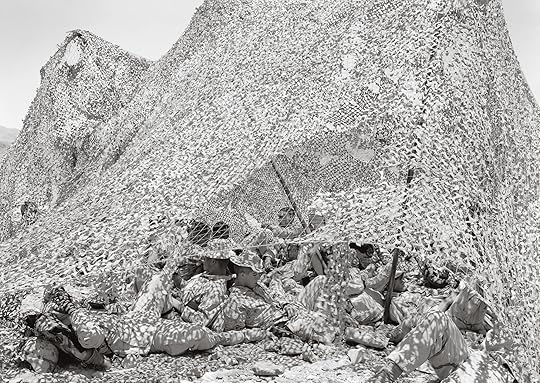 An-My Lê, Infantry Platoon, Alpha Company, 2003–4, from the series 29 Palms
An-My Lê, Infantry Platoon, Alpha Company, 2003–4, from the series 29 Palms 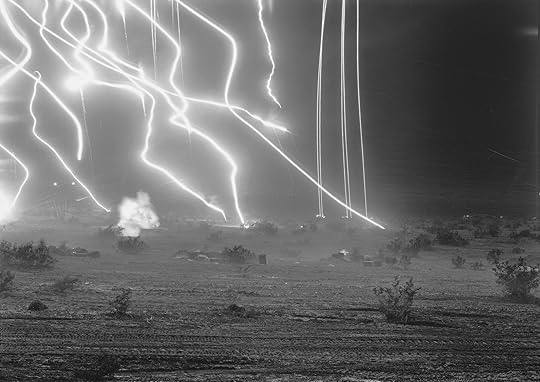 An-My Lê, Night Operations VII, 2003–4, from the series 29 Palms
An-My Lê, Night Operations VII, 2003–4, from the series 29 PalmsAll photographs courtesy the artist
Als : How did you feel at the end of these various projects? Did you feel as if you had “come home” in a sense? Has this work helped you deal with your origins?
Lê: It’s interesting that you ask about “coming home.” I’ve been obsessed with that idea because it applies to the type of fieldwork I do as a photographer as much as it is relevant to the experiences of the refugee and the soldier. Ambiguity and contradictions—the conflict between expectations and memories—these are all built into the experience of coming home for a refugee, for a soldier (whether from a real or virtual battle), or even for a photographer. Whether it is a childhood abruptly ended or a violently murderous week-long siege during the battle of Khe Sanh, some of us are confronted with these intense life experiences. They’re defining experiences that echo throughout one’s life. Whether coming home, returning to the country of origin for the refugee, going back to civilian life for the soldier, one is compelled to construct a story for oneself and hopefully come to terms with what happened. In attempting to construct a coherent narrative, one must negotiate a contentious and sometimes contradictory terrain, reconciling one’s own experience with other people’s ideas of it and against general expectations. It’s about understanding how one’s experience fits into the larger scheme of things and finding a personal equilibrium within that.
And as a photographer, there’s another layer—I have a different relationship to memories than the refugee or the soldier because through the work, there is potential for tangibility. I am the type of photographer who is interested in the way things look and in letting that be my major story-telling device. In that pointed moment it allows one to raise pertinent questions and to ponder the larger issues involved.
Crudely, my work is about reconciling what I thought I was getting myself into and what is actually revealed to me in the field. It’s not about taking a specific stand, or dignifying something that is important to me—nor is it about exalting a specific cause I’m committed to or exploring a subculture in depth. I’m satisfied in simply addressing these subjects: Vietnam, the military and the glamour of war, cultural and political history, and small subcultures. Photography becomes the perfect medium for conjuring up a sense of clarity (if not necessarily the truth) in the midst of chaotic and polarizing subjects.
This interview was originally published in An-My Lê: Small Wars (Aperture, 2005) and anthologized in Aperture Conversations: 1985 to the Present (Aperture, 2018).
An-My Lê: Between Two Rivers/Giua hai giòng sông/Entre deux rivières is on view at the Museum of Modern Art, New York, November 5, 2023–March 16, 2024.
Remembering the Energy, Emotion, and Sensuality of Larry Fink’s Photography
Larry Fink, who passed away at the age of eighty-two on November 25, 2023, was a man of contradictions in the best possible way; he contained multitudes. He was as much an artist and a seer, as a teacher and mentor, a musician, a farmer, Martha Posner’s husband, among many other lives. His work is in the top museum collections, yet he regularly entered the annual juried show for Pennsylvania photographers at the Allentown Art Museum. He was game to be part of the mix. The contrasts suited him. He moved easily between the formal society galas and gatherings of Manhattan’s social elite and the farm life of the Sabatine family, his neighbors in Martins Creek, Pennsylvania. The body of work combining the two, Social Graces, was first published by Aperture in 1984 in an unassuming nine-by-ten-and-a-quarter-inch hardcover for $25. It was his first book, and in the short text—the sole accompaniment to sixty-nine pictures—he mused, “When I walk around in a tuxedo and tap my toes, I’m a fancy dude. When I walk around Martins Creek, I’m a rolling country belly.” Social Graces would go on to become an icon among photobooks and the work that most defined him.
 Larry Fink, Oslin’s Graduation Party, Martins Creek, Pennsylvania, June 1977
Larry Fink, Oslin’s Graduation Party, Martins Creek, Pennsylvania, June 1977 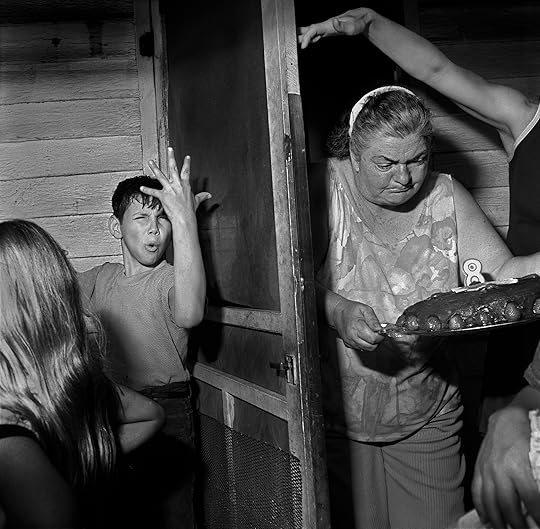 Larry Fink, Pat Sabatine’s Eighth Birthday Party, Martins Creek, Pennsylvania, April 1977
Larry Fink, Pat Sabatine’s Eighth Birthday Party, Martins Creek, Pennsylvania, April 1977  Larry Fink, Studio 54, New York City, May 1977
Larry Fink, Studio 54, New York City, May 1977Looking at it again now, in the week after his passing, I’m struck by the gorgeousness of these pictures. All of the things that make a Larry Fink photograph are here: that framing with its push and pull at the edges and vigorous cropping, the flash illuminating and exaggerating the energy, emotion, and sensuality. There’s a real roundness to the printing (produced at the legendary Meriden Gravure) and the physicality that pervades every one of Fink’s pictures comes forward—every wrinkled hand grasping, pursed-lipped smile, rolling country belly. The book begins each sequence in the middle of the party—Peter Beard’s ICP opening and Pat Sabatine’s eighth birthday (both 1977)—and then moves around the edges of the merriment with searing precision. It’s easy to get drawn in. Each picture is captioned simply with the event and year, even the family photos of birthdays and graduations. You can’t escape the truth that the camera stopped time to mark this moment, or the sense of what’s to come when the party’s over or when John and Jeannie Sabatine, already getting on in years in the pictures, pass away. Larry’s daughter, Molly, also appears in the sequence with the Sabatines, as a baby and then a toddler—a visual reminder that time is passing in a personal way for the photographer as well. It’s not that he is thinking of the idea of memory or death, so often touted in relationship to photography. It’s that he’s seeing they’re alive and that photography’s ability to capture this life is miraculous.
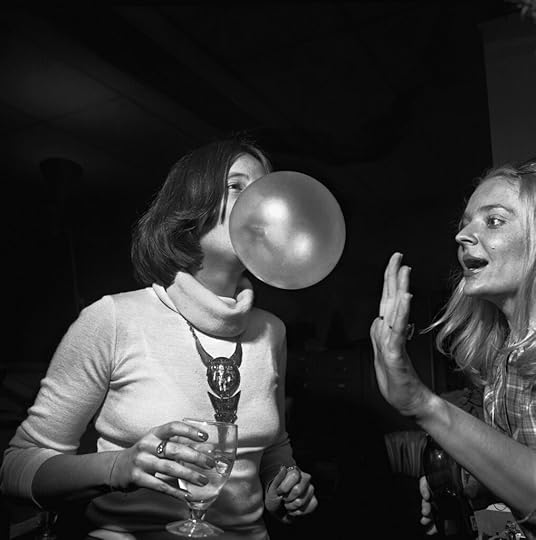 Larry Fink, New York Magazine Party, New York City, October, 1977
Larry Fink, New York Magazine Party, New York City, October, 1977  Larry Fink, Harlem, New York City, July 1964
Larry Fink, Harlem, New York City, July 1964All photographs from Larry Fink on Composition and Improvisation (Aperture, 2014). Courtesy the artist
 Larry Fink, Women on 5th Avenue, New York City, 1961
Larry Fink, Women on 5th Avenue, New York City, 1961 We worked together on his book for Aperture’s workshop series (Larry Fink on Composition and Improvisation, 2014), which is based on interviews and audio of his insights and teachings. Each visit, Larry would pick me and former colleague Robyn Taylor up from the bus station and drive us to the farm, crossing over the creek and up the winding driveway. And then he would promptly disappear. Where was Larry? He was out talking to a neighbor about a bulldozer or goofing off or in the sauna on the property. When we finally did get to work that first day, we had a magical conversation, talking about the impossibility of using the cold instrument of the camera to convey emotion. But, just as we were both starting to congratulate ourselves on such sparkling, high-minded prose, we realized we had forgotten to hit record. We spent the rest of our time trying to recreate that conversation. It was impossible, but led to other turns and tangents. How good pictures unfold as a question, how the edges of the frame can both enclose and leave open the picture, how to take a picture of water in a way that feels wet or cold, how you had to have a life outside the camera to make meaningful work.
In his singular and elliptical voice, “The goal, I suspect, through harmonies and edges and everything that we have in our command, is to take a dumb two-dimensional picture and make it something that a viewer enters and doesn’t want to leave.” The same could be said about a good book. When a book has been a pleasure to work on, I find myself reluctant to finish it. Even though it is the beginning of the book’s life in the world when it goes to the printer, the process of making it comes to a close. On the workshop book, we were beyond late, and Larry was nowhere to be found when I called the farm to push him again to get through the final layouts. I left a message saying I would give him a prize if he could return it within forty-eight hours—an impossible deadline, but it worked! I wasn’t ready to let the book go then, and I’m not ready to say goodbye now. But I know what Larry would say. We ended the workshop book with: “Photography is not all that there is. You gotta live.”
November 29, 2023
Alex Webb on Reimagining a Photobook, Twenty-Five Years Later
About twenty-five years ago, I was looking at a group of photographs that intrigued and somewhat puzzled me. None of these rather curious stray images had yet found their way into any of my books. It wasn’t just that the photographs didn’t fit the geographic parameters of the recent books I had published on Florida and the Amazon River, but also that they seemed almost placeless. As I selected and sequenced the images—seeing visual links, trying to understand the nature of the work—I began to realize that many of them struck a note of dislocation: inevitably geographically, as they were taken all over the world, but also sometimes emotionally, visually, psychologically, culturally. There was often something just a little odd, a little strange. As I shaped and expanded the sequence, it became clear that they belonged together as a single body of work.
In 1998, I was invited to publish a limited edition artist book of this work by Harvard’s Film Study Center. Dislocations was an experiment in alternative bookmaking—a notion that seems a bit quaint these days, what with the vast variety of photographic books now being produced. Dislocations was printed in an edition of forty with four artist proofs. It was an accordion book with Canon laser prints (then considered state of the art) of some fifty photographs tipped in on debossed pages, with titles that I handwrote. And, it came in a unique collapsible box.
 Alex Webb: Dislocations 50.00 Newly reimagined edition of Alex Webb’s now-classic and long out-of-print Dislocations.
Alex Webb: Dislocations 50.00 Newly reimagined edition of Alex Webb’s now-classic and long out-of-print Dislocations. $50.00Add to cart
[image error] [image error]
In stock
Alex Webb: DislocationsPhotographs by Alex Webb. Text by Alex Webb. Designed by David Chickey.
$ 50.00 –1+$50.00Add to cart
View cart Description Newly reimagined edition of Alex Webb’s now-classic and long out-of-print Dislocations.Dislocations presents a contemporary update of Alex Webb’s long out-of-print 1998 book by the same name, which was first published by Harvard’s Film Study Center as an experiment in alternative book making. The book brought together pictures from the many disparate locations over Webb’s oeuvre, meditating on the act of photography as a form of dislocation in itself. Dislocations was instantly collectable and continues to be sought after today.
Webb returned to the idea of dislocation during the pandemic, looking at images produced in the twenty years since the original publication—as well as looking back at that first edition. Dislocations expands a beloved limited edition with unpublished images that speak to today’s sense of displacement. As a series of pictures that would have been impossible to create in a world dominated by closed borders and disrupted travel, it continues to resonate as the world resets. Details
Format: Hardback
Number of pages: 128
Number of images: 80
Publication date: 2023-11-28
Measurements: 11.8 x 10.2 inches
ISBN: 9781597115445
Alex Webb (born in San Francisco, 1952) has published more than fifteen books, including Aperture titles Brooklyn: The City Within (2019, with Rebecca Norris Webb), La Calle: Photographs from Mexico (2016), On Street Photography and the Poetic Image (2014, with Rebecca Norris Webb), and a survey of his color work, The Suffering of Light (2011). Webb has been a full member of Magnum Photos since 1979. His work has been shown widely, and he has received numerous awards, including a Guggenheim Fellowship in 2007.
Featured Content Featured Alex Webb's La Calle Gives Voice to Mexico's Streets
Featured Alex Webb's La Calle Gives Voice to Mexico's Streets Since creating the first version, I’ve continued to produce other dislocated images. Three years ago, during another kind of dislocation—in sequestration for the coronavirus in the spring of 2020 in Wellfleet, Massachusetts—I started putting together this new, expanded edition on the magnetic walls of my Cape Cod studio. I began selecting images from the more than twenty years since the original publication, as well as work from the first edition and a few earlier unpublished images. This new version of Dislocations—with some eighty photographs made on five continents—incorporates nearly half of the original photographs from the first edition, with the lion’s share comprised of later images.
Related Event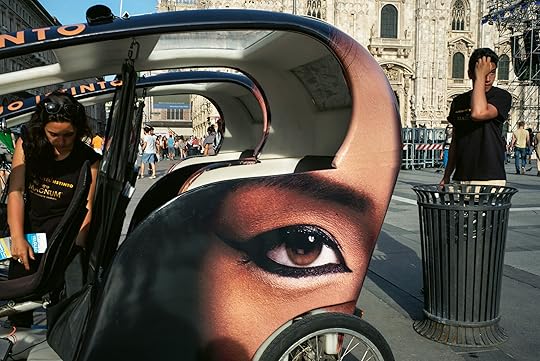 Alex Webb and Denise Wolff Discuss “Dislocations”
Alex Webb and Denise Wolff Discuss “Dislocations”Looking back, perhaps I was drawn to reimagining and enlarging this series during the pandemic in part because it was impossible to create such images in a world dominated by closed borders and disrupted travel.
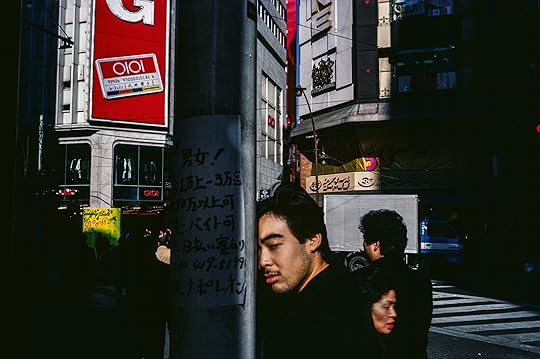 Alex Webb, Tokyo, 1985
Alex Webb, Tokyo, 1985  Alex Webb, Genoa, Italy, 2019
Alex Webb, Genoa, Italy, 2019 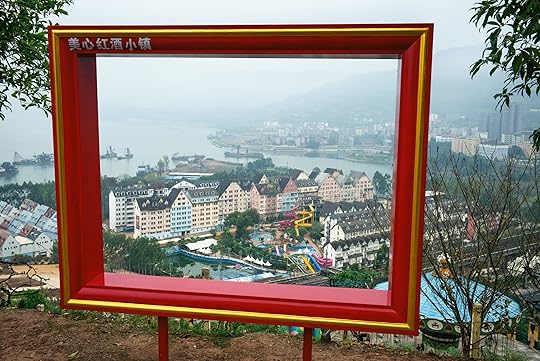 Alex Webb, Chongqing, China, 2017
Alex Webb, Chongqing, China, 2017 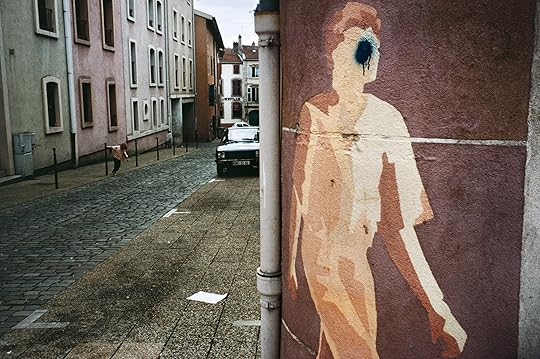 Alex Webb, Lunéville, France, 2000
Alex Webb, Lunéville, France, 2000  Alex Webb, Porto Cervo, Sardinia, 1998
Alex Webb, Porto Cervo, Sardinia, 1998 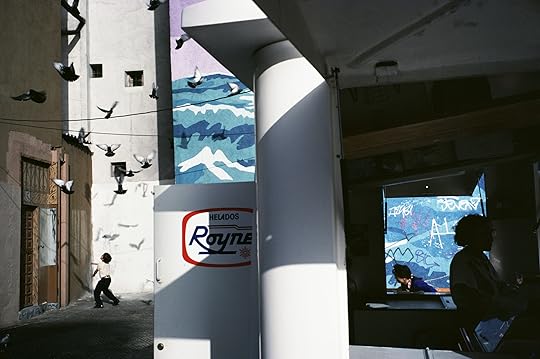 Alex Webb, Madrid, 1992
Alex Webb, Madrid, 1992 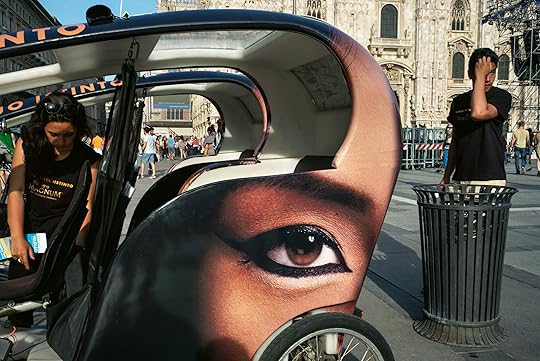 Alex Webb, Milan, 2016
Alex Webb, Milan, 2016  Alex Webb, Dallas, 1981
Alex Webb, Dallas, 1981  Alex Webb, Madrid, 1992
Alex Webb, Madrid, 1992  Alex Webb, Atlanta, 1996
Alex Webb, Atlanta, 1996All photographs courtesy the artist
This text originally appeared in Dislocations (Aperture, 2023).
November 22, 2023
31 Photobooks for Everyone on Your Holiday Gift List
Looking for the perfect holiday gift? From a gift subscription to Aperture magazine, major debut monographs, newly released book bundles, engaging photography reads, and so much more—we’ve rounded up titles for everyone on your list.
Must-Haves for Photo Lovers

Aperture Magazine Subscription
The source for photography since 1952, Aperture features immersive portfolios, in-depth writing, and must-read interviews with today’s leading artists. Numerous luminaries have guest edited issues, including Wolfgang Tillmans, Tilda Swinton, Alec Soth, Sarah Lewis, Nicole R. Fleetwood, and Wendy Red Star, making the magazine essential reading for anyone interested in photography and contemporary culture.

Josef Koudelka: Next is an intimate portrait of the life and work of one of photography’s most renowned and celebrated artists. Drawn from extensive interviews conducted over nearly a decade with the artist and his friends, family, colleagues, and collaborations from around the globe, author Melissa Harris offers an unprecedented glimpse into the mind and world of this notoriously private photographer. Richly illustrated with hundreds of photographs, this visual biography includes personal and behind-the-scenes images from Koudelka’s life, alongside iconic images from his extensive body of work spanning the 1950s to the present.
Looking for more inspiring photography reads? Bundle and save with our Reader Book Bundle featuring Josef Koudelka: Next, Strange Hours by Rebecca Bengal, and We Were Here by Sunil Gupta.

The New Black Vanguard: Photography between Art and Fashion
In The New Black Vanguard, curator and critic Antwaun Sargent addresses a radical transformation taking place in art and fashion today, highlighting the work of fifteen contemporary Black photographers rethinking the possibilities of representation.

In Dislocations, Alex Webb draws from photographs across the many disparate locations of his oeuvre in a meditation on the act of photography as a form of dislocation in itself. A contemporary update of the long out-of-print book by the same name, Webb returned to this idea of dislocation during the pandemic when he began to look at images produced in the twenty years since the original publication. Featuring previously unpublished images, Dislocations expands a beloved limited edition with a series of photographs that speak to today’s sense of displacement.
Contemporary Classics

In her dynamic photographs, Wendy Red Star recasts historical narratives with wit, candor, and a feminist, Indigenous perspective. Delegation is the first comprehensive monograph by Red Star (Apsáalooke/Crow), centering Native American life and material culture through the artist’s imaginative self-portraiture, vivid collages, archival interventions, and site-specific installations. Whether referencing nineteenth-century Crow leaders or 1980s pulp fiction, museum collections, or family pictures, she constantly questions the role of the photographer in shaping Indigenous representation. Delegation is a spirited testament to the intricacy of Red Star’s influential practice, gleaning from elements of Native American culture to evoke a vision of today’s world and what the future might bring.

From hip-hop to Nefertiti, Awol Erizku’s interdisciplinary practice references and re-imagines African American and African visual culture, while nodding to traditions of spirituality and Surrealism. Mystic Parallax is the first major monograph to span this rising artist’s career. Throughout his work, Erizku consistently questions and reimagines Western art, often by casting Black subjects in his contemporary reconstructions of canonical artworks. “This goes back to the idea of a continuum of the Black imagination,” Erizku states. “When it’s my turn, as an image maker, a visual griot, it is up to me to redefine a concept, give it a new tone, a new look, a new visual form.” Blending Erizku’s studio practice with his work as an editorial photographer, the volume is accompanied by essays from acclaimed author Ishmael Reed, curator Ashley James, and writer Doreen St. Félix, alongside interviews with Urs Fischer and Antwaun Sargent.

Deana Lawson: An Aperture Monograph
Over the last ten years, Deana Lawson has portrayed the personal and the powerful in her large-scale, dramatic portraits of people in the US, the Caribbean, and Africa. One of the most compelling photographers working today, Lawson’s Aperture Monograph is the long-awaited first photobook by the visionary artist. “Outside a Lawson portrait you might be working three jobs, just keeping your head above water, struggling,” writes Zadie Smith in the book’s essay. “But inside her frame you are beautiful, imperious, unbroken, unfallen.”
Collect a limited edition of Deana Lawson: An Aperture Monograph featuring a special slipcase and custom tipped-in c-print.
For the Reader
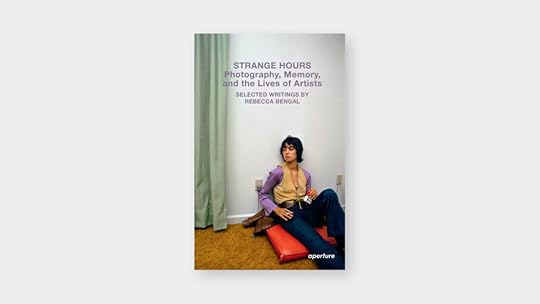
Strange Hours: Photography, Memory, and the Lives of Artists by Rebecca Bengal
In Strange Hours, Rebecca Bengal considers the photographers who have defined our relationship to the medium. Through generous essays and interviews, she contemplates photography’s narrative power, from the radical intimacy of Nan Goldin’s New York demimonde to Justine Kurland’s pictures of rebel girls on the open road. Whether speaking with William Eggleston or traveling with Alec Soth, Bengal’s prose is attuned to the alchemy of experience, chance, and the vision that has always pushed photography’s potential for unforgettable storytelling.
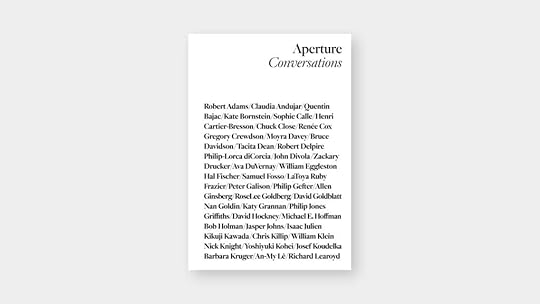
Aperture Conversations: 1985 to Present
What led Stephen Shore to work with color? Why was Sophie Calle accused of stealing Johannes Vermeer’s The Concert? Aperture Conversations presents a selection of interviews pulled from Aperture’s publishing history, highlighting critical dialogue between esteemed photographers and artists, critics, curators, and editors since 1985.
Pioneering Voices

In Elegy, acclaimed photographer Dawoud Bey continues his ongoing series on African American history in the US, narrowing in on the deep historical memory embedded in its geography. Weaving together three of Bey’s landscape series, the artist takes viewers to the historic Richmond Slave Trail in Virginia, the plantations of Louisiana, and along the last stages of the Underground Railroad in Ohio. Divided into an elegy of three movements, Bey not only evokes history, but retells it through historically grounded images that challenge viewers to go beyond seeing and imagine lived experiences.

In her searing, diaristic portrait of a city and society in revolution, Myriam Boulos creates an intimate portrait of youth, queerness, and protest. What’s Ours, her debut monograph, brings together over a decade of images, casting a determined eye on the revolution that began in Lebanon in 2019 with protests against government corruption and austerity—culminating with the aftermath of the devastating Beirut port explosion of August 2020. Photographing her friends and family with energy and intimacy, Boulos portrays the body in public space as a powerful symbol of vulnerability and resistance against neglect and violence. “Boulos’s lens inspires and entices her subjects,” writes Mona Eltahawy in an accompanying essay, “they know they have an ally, a secret sharer in their intimacy who then shares them with the rest of us.”
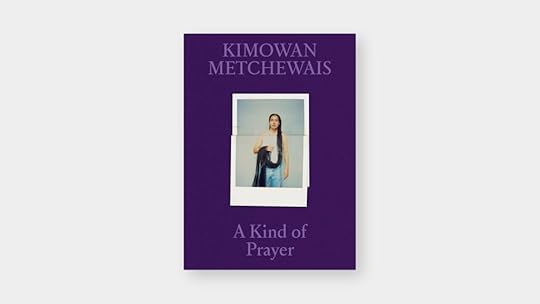
Kimowan Metchewais: A Kind of Prayer
Kimowan Metchewais’s exquisitely layered works explore Indigenous identity, community, and colonial memory. After his untimely death at the age of forty-seven in 2011, Metchewais left behind an expansive body of photographic and mixed-media work—including an extensive polaroid archive that addresses a range of themes, including self-portraiture, the body, language, and landscapes. A Kind of Prayer is the first-ever survey dedicated to the late Cree artist, showcasing Metchewais’s essential artistic vision.

Kwame Brathwaite: Black Is Beautiful
Kwame Brathwaite’s photographs from the 1950s and ’60s transformed how we define Blackness. Using his photography to popularize the slogan “Black Is Beautiful,” Brathwaite challenged mainstream beauty standards of the time. Born in Brooklyn and part of the second-wave Harlem Renaissance, Brathwaite and his brother Elombe were responsible for creating the African Jazz Arts Society and Studios (AJASS) and the Grandassa Models. Until now, Brathwaite has been underrecognized, and Black Is Beautiful is the first-ever monograph dedicated to his remarkable career.
For the Armchair Traveler

Ed Templeton: Wires Crossed (Limited Edition Box Set)
In Wires Crossed, Ed Templeton offers an insider’s look at the skateboarding community as it gained increasing cultural currency in the 1990s and beyond. Part memoir, part document of the DIY, punk-infused subculture of skateboarding, the book reflects on a subculture in the making and the unique aesthetic stamp that sprang from the skate world he helped create. “I picked up a camera to remember my youth as a skateboarder which started disappearing the very millisecond I could fathom I was mired in it,” Templeton reflects. “Playing the roles of both observer and participant, I wanted to document the extraordinary things I was able to do, and the people I was doing them with.” This limited-edition box set features a unique hand-painted print, enclosed in a specially-designed slipcase.
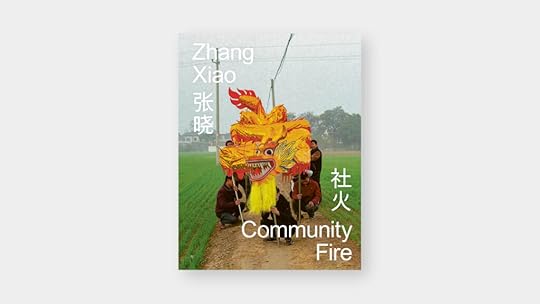
Photographing Shehuo, a Chinese Spring Festival tradition, Zhang Xiao provides a local, hometown look at the event—and how it has transformed over the years. Celebrated in rural northern Chinese communities, Shehuo boasts a history that spans thousands of years. However, what was once a heterogeneous cultural tradition with a myriad of regional variations has largely become a tourist-facing, consumption-oriented enterprise. Community Fire narrows in on how the mass-produced substitutions of Qing dynasty-era costumes and props have transformed the practice of Shehuo. Through a colorful and fantastical blend of portraiture and ephemera, Zhang blurs the edges between the everyday and absurd.
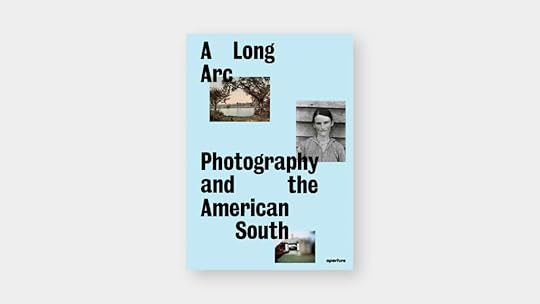
A Long Arc: Photography and the American South
Since the dawn of photography in the nineteenth century, photographers have articulated the distinct and evolving character of the South’s people, landscape, and culture, and reckoned with its fraught history. The visual history of the South is inextricably intertwined with both the history of photography and America, offering an apt lens through which to examine American identity. A Long Arc collects over 175 years of key moments in the visual history of the Southern United States, featuring works by artists such as Walker Evans, Baldwin Lee, Robert Frank, Sally Mann, Carrie Mae Weems, Alec Soth, An-My Lê, and more.
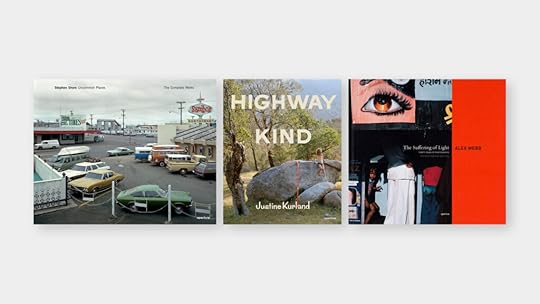
The Road Trip Photographer Bundle
Hit the open road by traveling near and far through the work of illustrious photographers Justine Kurland, Stephen Shore, and Alex Webb. In Highway Kind, Justine Kurland explores the reality of the American dream with photographs equal parts raw and romantic. Originally published in 1982, Stephen Shore’s large-format color photographs, brought together in the legendary Uncommon Places, have influenced a generation of photographers. The Suffering of Light gathers some of Webb’s most iconic images taken in distant corners of the world, distilling Webb’s unique ability to pull together gesture, color, and contrasting cultural tensions into single, beguiling frames.
Advertisement
googletag.cmd.push(function () {
googletag.display('div-gpt-ad-1343857479665-0');
});
Give the Gift of Inspiration
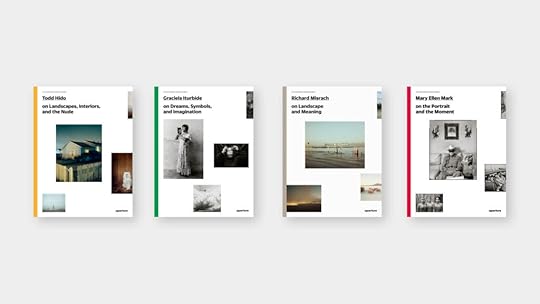
The Photography Workshop Series Book Bundle
In our Photography Workshop Series, Aperture works with the world’s top photographers to distill their creative approaches to, teachings on, and insights into photography, offering the workshop experience in a book. From Richard Misrach on landscape photography and meaning, to Graciela Iturbide on how to employ a deeply personal vision while also reflecting subjects’ rich cultural backgrounds, to Todd Hido’s insights on the genres of landscape, interior, and nude photography—these books offer inspiration to photographers at all levels who wish to improve their work, as well as readers interested in deepening their understanding of the art of photography.

Photo No-Nos: Meditations on What Not to Photograph
What is a “photo no-no”? Photographers often have unwritten lists of subjects they tell themselves not to shoot—things that are cliché, exploitative, derivative, or sometimes even arbitrary. Edited by Jason Fulford, this volume brings together ideas, stories, and anecdotes from over two hundred photographers and photography professionals. Not a strict guide, but a series of meditations on “bad” pictures, Photo No-Nos covers a wide range of topics, from sunsets and roses to issues of colonialism, stereotypes, and social responsibility—offering a timely and thoughtful resource on what photographers consider to be off-limits, and how they have contended with their own self-imposed rules without being paralyzed by them.

PhotoWork: Forty Photographers on Process and Practice
How does a photographic project or series evolve? How important are “style” and “genre”? What comes first, the photographs or a concept? PhotoWork is a collection of interviews with forty photographers about their approaches to making photographs and a sustained body of work. Structured as a Proust-like questionnaire, editor Sasha Wolf’s interviews provide essential insights and advice from both emerging and established photographers—including LaToya Ruby Frazier, Todd Hido, Rinko Kawauchi, Alec Soth, and more—while also revealing that there is no single path in photography.
For the Design Lover

Viviane Sassen: Venus & Mercury
In 2018, Viviane Sassen was invited by Versailles to make a series of photographs throughout its vast grounds. For six months, she was given free rein, often after official hours when the buildings were empty, to wander and photograph the palace’s extravagant gardens, gilded baroque interiors, and even Marie Antoinette’s private correspondence. Drawn to the bodies represented in the palace’s many marble statues, Sassen created hybrid forms that play with notions of sexuality and gender, calling to mind traditions of Surrealist art and the work of figures such as Hans Bellmer. Brought together in a limited-edition book crafted by the iconic designer Irma Boom, Venus & Mercury offers a fresh vision of the storied palace—and all its beauty, melancholy, and intrigue.

David Benjamin Sherry: Pink Genesis
With his mesmerizing analog photograms, David Benjamin Sherry melds queer history, abstraction, and darkroom magic. Born out of what Sherry has called the “transformative potential of the darkroom,” each of his large-scale, cameraless color photograms is laboriously made by hand in the darkroom. Using cardboard masks to create geometric forms and incorporating his own body into the images, Sherry actively references histories of photography—while also thinking through the intersections of identity, form, and the hypnotic power of extreme color. Pink Genesis collects twenty-nine one-of-a-kind works that delight in the pleasures of form and color.
Children’s Activity Books

Inspire young readers with three special books that explore the magic of photography. In Eyes Open, Susan Meiselas compiles a sourcebook of photography ideas and prompts for children to engage with the world through the camera. Seeing Things acts as a wonderful introduction to photography, with narration by Joel Meyerowitz on how photographers can transform ordinary things into meaningful moments. Aimed at children between eight and twelve years old, Go Photo! features twenty-five hands-on and creative activities inspired by photography.

The Colors We Share by Angélica Dass
Inspired by her family tree, Angélica Dass—a Brazilian artist of African, European, and Native American descent—began creating portraits of people from all over the world against backgrounds that match their skin tones. Brought together in a book made for young readers, The Colors We Share celebrates the diverse beauty of human skin, while also considering concepts of race and the limited categories we use to describe each other.
For the Collector

As We Rise: Sounds from the Black Atlantic (LP)
Aperture’s first record release is a celebratory collection of classic and contemporary Black music made throughout the diaspora, featuring artists such as Jamaican dancehall musician Tenor Saw, North American guitarist Jeff Parker, British funk band Cymande, and South African artist-singer-activist Miriam Makeba. The LP expands upon the ethos of the book As We Rise: Photography from the Black Atlantic, a timely exploration of Black identity on both sides of the Atlantic.
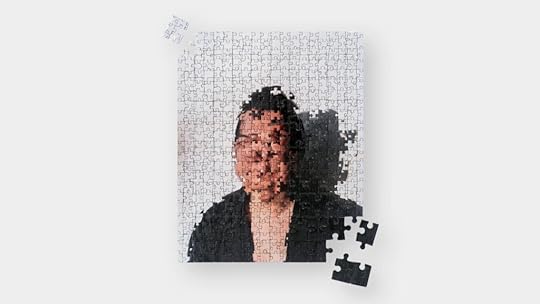
Limited-Edition Puzzle by Tommy Kha
Released in celebration of Tommy Kha’s first major monograph, Half, Full, Quarter, this limited-edition puzzle features one of the artist’s idiosyncratic self-portraits. Known for his visually mischievous, yet deeply personal photographs, Kha’s work is an investigation of Asian American identity in the American South.

In this special book bundle, take an inside look at the photography collections of renowned artist collectors Judy Glickman Lauder, Dr. Kenneth Montague, and Elton John. Presence brings together over 150 images from Glickman Lauder’s collection in a celebration of photography’s ability to capture the human experience. Drawn from Montague’s Wedge Collection in Toronto, As We Rise looks at the multifaceted ideas of Black life through the lenses of community, identity, and power. Considered one of the greatest private collections of photography in the world, The Radical Eye presents an unparalleled selection of modernist images from the collection of musician and philanthropist Elton John.

Sara Cwynar: Glass Life (Limited-Edition Box Set)
Sara Cwynar’s multilayered portraits are an investigation of color and image-driven consumer culture. Working in her studio, Cwynar collects, arranges, and archives eBay purchases in visually complex photographs that examine how images circulate online, as well as how the lives and purposes of both physical objects and their likenesses change over time. This special limited-edition box set features a differentiated version of Cwynar’s debut monograph, Glass Life, accompanied by a signed print from the artist.
Visions in Black & White

Kristine Potter’s dark and brooding photographs reflect on the Southern Gothic landscape of the American South, as evoked in the popular imagination of “murder ballads” from the nineteenth and twentieth century. Brought together in Dark Waters, Potter’s seductive, richly detailed black-and-white images channel the setting and characters of these songs—capturing the landscape and creating evocative portraits that stand in the oft-unnamed women at the center of these stories. Featuring a short story by Rebecca Bengal, Dark Waters both induces and exorcises the sense of threat that women often contend with as they move through the world.
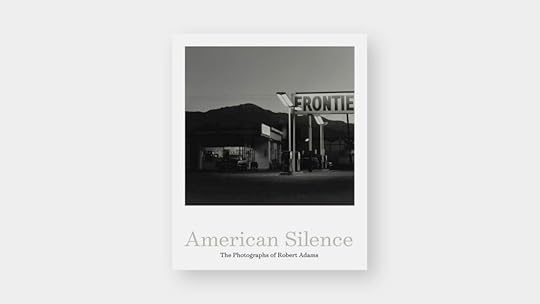
American Silence: The Photographs of Robert Adams
For fifty years, Robert Adams has made compelling, provocative, and highly influential photographs that show us the wonder and fragility of the American landscape, its inherent beauty, and the inadequacy of our response to it. American Silence features over 175 works from Adams’s career photographing throughout Colorado, California, and Oregon—capturing suburban sprawl, strip malls, highways, homes, and the land. By examining the artist’s act of looking at the world around him, this volume showcases the almost palpable silence of his photographs.

In a signature, modulating gray scale, the late Norwegian photographer Tom Sandberg spent decades rendering the shapes and forms of everyday life in his exacting vision. From dark abstractions of asphalt and sea, to the hard edges of an automobile or curved tunnel, to anonymous figures cast in shadow, Sandberg creates subtle yet transformative studies of stillness that radiate mystery. A perfectionist in the darkroom, Sandberg was acutely sensitive to the rich spectrum of black and white, and his handmade prints project a powerful physical presence. Tom Sandberg: Photographs is the first major publication dedicated to one of Norway’s most important photographers.
Shop Aperture’s Holiday Sale now for savings on photobooks, book bundles, magazines, and limited-edition prints.
November 17, 2023
The Oppositional Energy of Zines
This article originally appeared in Aperture, issue 249, “Reference,” Winter 2022.
If you got lucky in the summer of 1947, your hands might have wrapped themselves around a mimeographed collection of typewritten thoughts called Vice Versa. Edited under the nom de plume Lisa Ben, it was among the first of what we now think of as zines. It was almost certainly the first queer one. Small in scale and big in voice, Vice Versa defined itself from page one as “a magazine dedicated, in all seriousness, to those of us who will never quite be able to adapt ourselves to the iron-bound rules of Convention. . . . Please keep in mind that the entire publication was originated and compiled by one person.”
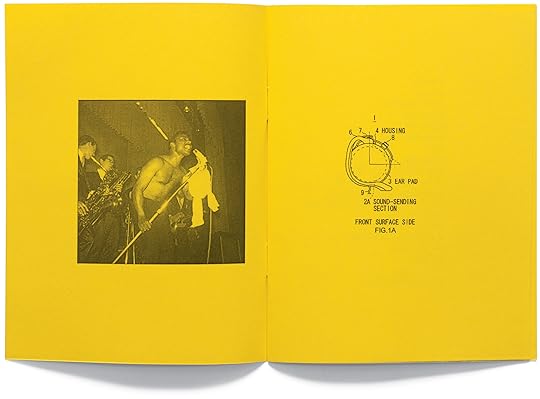 Spread from Sound Aspects Part 1 (BlackMass Publishing, 2020)
Spread from Sound Aspects Part 1 (BlackMass Publishing, 2020)Courtesy BlackMass Publishing and the Center for Book Arts, New York
 Spread from Stay Close to Me (BlackMass Publishing, 2021)
Spread from Stay Close to Me (BlackMass Publishing, 2021) That one person, “Lisa Ben,” was actually Edythe Eyde, an employee of the film production company RKO, presumably living in the Los Angeles area. Given the long history of alienation from mainstream culture queer people have, perhaps Eyde saw the independent science-fiction publications on drugstore racks and found inspiration in their longing for other worlds. But she made Vice Versa more or less on her own, publishing film and theater reviews and thrillingly sentimental, and horny, poetry. From the start, then, zines—handmade collections of often-appropriated art and text, run off via mimeograph or copy machine, and usually handed out or otherwise distributed outside of traditional publishing networks—have offered a way around waiting for the future. They are a way to make yourself a present, and to share it within a like-minded community.
 Aperture Magazine Subscription 0.00 Get a full year of Aperture—and save 25% off the cover price. Your subscription will begin with the summer 2023 issue, “Being & Becoming: Asian in America.”
[image error]
[image error]
Aperture Magazine Subscription 0.00 Get a full year of Aperture—and save 25% off the cover price. Your subscription will begin with the summer 2023 issue, “Being & Becoming: Asian in America.”
[image error]
[image error] 
In stock
Aperture Magazine Subscription $ 0.00 –1+ View cart DescriptionSubscribe now and get the collectible print edition and the digital edition four times a year, plus unlimited access to Aperture’s online archive.
“Zines are repositories of oppositional energy,” says Branden W. Joseph, a professor of art history at Columbia University. “They’re made by people who feel outside of some larger conventional institution.” Today, of course, they are institutions in their own right, racking up sales at buzzy art-book fairs and stuffing influential anthologies such as Lisa Darms’s The Riot Grrrl Collection (2013) and AA Bronson and Philip Aarons’s Queer Zines series. Museums are finally taking the medium seriously. In the fall of 2023, Drew Sawyer, a curator at the Brooklyn Museum, and Joseph will mount a comprehensive retrospective of zines as a form of artistic production. “It’s turning into a kind of photo show,” says Sawyer, to his surprise. “From the 1970s through, say, the early 2000s, the photocopy machine was the main technology for zines. That’s a photographic technology. And it’s also a reproduction technology, intentionally going against the sort of value that was placed on the gelatin-silver print.” Zines rely on the documentary authority of the photograph, while destabilizing the preciousness of the print.
The Canadian queer-punk polymath G. B. Jones has made a career out of that kind of authoritative destabilization. As a young woman in 1980s Toronto, she led the post-punk, proto–riot grrrl band Fifth Column while working at Just Desserts, the city’s answer to New York’s Florent, the mythic all-night meatpacking-district hangout that shuttered in 2008. Jones had encountered Candy Parker and Caroline Azar’s zine Hide, which used a photocopier as a camera to build blown-out assemblages rivaling the murky surrealism of the graphic designer Vaughan Oliver and the psychosis of David Lynch, at a fraction of their time frames and budgets. Hide’s first cover, for example, feature a kind of nightmarish, swollen-chested clown. Jones eventually joined the team and Hide began including cassette compilations of punk and experimental music with the printed issues.
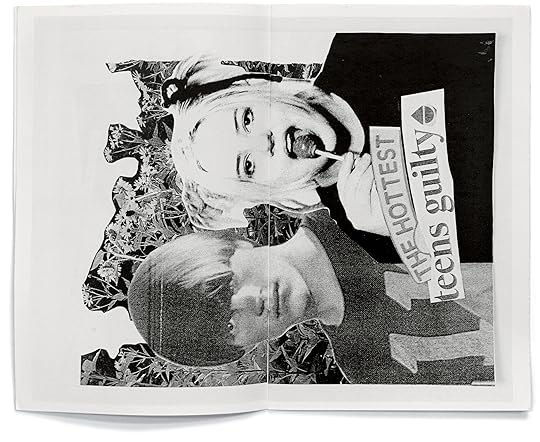 Reproduction of Untitled, 2002, in Paul P. and G. B. Jones, Zine (Andrew Roth, 2013)
Reproduction of Untitled, 2002, in Paul P. and G. B. Jones, Zine (Andrew Roth, 2013)Courtesy the artist
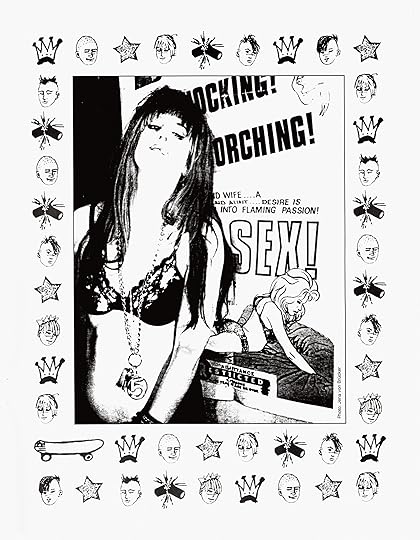 Page from G. B. Jones (Feature Inc., 1995), designed and edited by Steve Lafreniere, with a photograph of Jones by Jena von Brücker originally from Jane and Frankie’s Joy O’ Sex (Jena and Klaus von Brücker, 1990)
Page from G. B. Jones (Feature Inc., 1995), designed and edited by Steve Lafreniere, with a photograph of Jones by Jena von Brücker originally from Jane and Frankie’s Joy O’ Sex (Jena and Klaus von Brücker, 1990)Courtesy the artist
In 1985, Jones applied her virtuosic talents to a new publication called J.D.s, an eight-issue collaboration with Bruce LaBruce, now an underground film legend, but at the time an aspiring artist and local bon vivant who had served as Fifth Column’s go-go boy. The zine’s name referenced “juvenile delinquents” and lay claim to a constellation of homocelebrities that didn’t quite exist, but should. “We were trying to merge different worlds that were isolated from each other,” Jones says. “We just invented this scene, and we took pictures of all the people who worked at the restaurant.” Like a dyke Oscar Wilde, Jones declared the genius of her friends. They became stars because, in the universe of J.D.s, they were. Eventually, the friends would also become stars of the underground film scene in Super 8 shorts such as the picaresque The Troublemakers from 1990 and 1992’s The Yo-Yo Gang, a tale of rival girl gangs teeming with sex, violence, and wild joy.
The Canadian queer-punk polymath G. B. Jones has made a career out of authoritative destabilization.
Jones also began a long and fruitful collaboration with the Canadian artist Paul P., whose own work recontextualizes gay porn as intimate portraiture. Their dyadic collages blur the boundaries between archive and activism, drawing from sources including Canada’s sordid history of raiding bathhouses and the police brutality around the 2010 G20 summit in Toronto. The work builds on Jones’s 1980s output, fearlessly confronting misogyny, antiporn second-wave feminism, and the Canadian government. “We did it because we wanted to have fun. It was a way of interacting with the culture and developing a culture that was kind of more fun than, you know, standing on the street corner with a sign and yelling at the police,” she says.
And the police didn’t like J.D.s. “We were sending out hundreds of copies,” Jones says, “and almost all of our mail would be opened.” In the late 1980s and early 1990s, the Canadian post office was “at the height of what you could only call a persecution campaign against LGBT bookstores,” she says. “They routinely seized almost everything coming to bookstores. You had to make packages as boring, as uninteresting as possible.” Closeting queer publications was, she notes, a familiar survival mechanism.
 Cover of Ho Tam, Hotam #1: A Brief History of Me (88Books, 2013)
Cover of Ho Tam, Hotam #1: A Brief History of Me (88Books, 2013)Courtesy the artist
 Cover of Ho Tam, Hotam #5: Hot Asian Men (88Books, 2014)
Cover of Ho Tam, Hotam #5: Hot Asian Men (88Books, 2014)Courtesy the artist
The artist and filmmaker Ho Tam is also familiar with government censorship. Growing up in Hong Kong, he says that he “was always cutting up magazines to create my own kind of little play books.” In 2019, he opened a bookshop and gallery in Vancouver, where he relocated in 2010, in part to show work on newsprint by Hong Kong dissidents who had embraced newsprint for its lack of a digitial footprint. “I don’t think I can go back to Hong Kong without being arrested,” he says. “We think of zines as being ephemeral, but they’re so weighty.”
Tam left Hong Kong to attend college in Ontario, where he taught himself to paint. Then he moved to Toronto, perhaps lured by the work of figures such as Jones and the influential collective General Idea, which in the 1980s had fused AIDS activism with a range of art practices. “There was a lot of discourse about racial representations,” he says of his arrival in the early 1990s. He began exhibiting his paintings, which often explored idealized depictions of Asian male idols, but soon shifted direction. “I wanted to turn everything around,” he says, and “laugh at myself, make trouble.” That trouble became The Yellow Pages, a 1993 artist book he made into a color-Xerox-on-parchment-paper edition the following year and, later, a silent video.
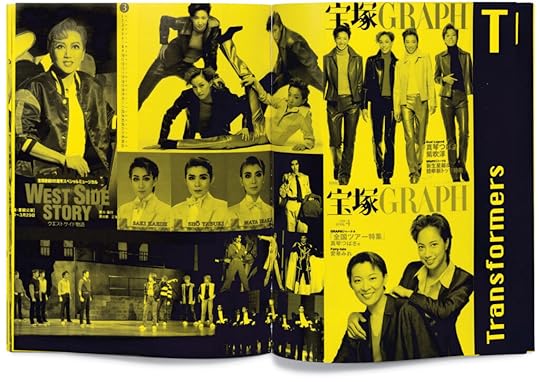 Spread from Ho Tam, Hotam #12: The Yellow Pages (88Books, 2016)
Spread from Ho Tam, Hotam #12: The Yellow Pages (88Books, 2016)The work juxtaposes pictures that display stereotypes of Asians (a smiling woman serving a steaming plate of food) or the impact of U.S. imperialism (the explosion of an atomic bomb) with a slur (the words Dog Meat under the former; Zen paired with the latter). Over the next few decades, Tam issued various editions of The Yellow Pages, along with books and zines, some by other artists. His fifteen-issue Hotam (2013–17) begins with a fifty-page memoir, A Brief History of Me, in which each page lines up photographs from a single year of his life with a time line of political events. Page 32, for example, situates a portrait of the stylish, smiling Tam in winter street clothes between markers for the sarin gas attack in Tokyo and the Oklahoma City bombing. The connection asserts Tam’s place in history while also questioning that position. Issue #5, titled Hot Asian Men: Special Literary Issue, alternates spreads of beefcake Bruce Lee playing cards and covers of OG magazine, likely the first gay Asian softcore porn targeted at the West, with poetry and reporting by leading gay Asian writers. His publication Poser (2013–16) compiles disarmingly intimate solo portraits in public spaces. Its final issue, for instance, lines up snapshots of passengers sitting in the waiting lounges of Chicago’s O’Hare, Bangkok’s Suvarnabhumi, and Tokyo’s Narita airports, charging phones or eating McDonald’s, smiling indulgently or staring down Tam’s lens, each navigating post-9/11 international travel, with its increased surveillance and distrust of strangers, in their own discrete way.
Advertisement
googletag.cmd.push(function () {
googletag.display('div-gpt-ad-1343857479665-0');
});
In the twenty-first century, artists still have to navigate bureaucracies of power just to get where they want to go, and the journey for artists of color can be particularly grueling. Rather than convincing arts and publishing institutions to support them, some take matters into their own hands. The New York–based visual artist and writer Yusuf Hassan founded BlackMass Publishing in the fall of 2018 to circulate his own work, such as the Sound Aspects series of zines, which programs duets of Black culture and audio ephemera: in the first volume, for instance, a shirtless, shimmering Little Richard hollers across the page from a diagram of a hearing aid. Named after the 1966 Amiri Baraka play A Black Mass, the collective counts the artist and poet Kwamé Sorrell among its frequent collaborators. It has amassed a catalog of publications recognizable for their restrained, minimal design. Another zine from 2021, Stay Close to Me, features a poem by the Guyanese poet Martin Carter titled “Death of a Comrade,” opposite an upended photograph of the punk band Bad Brains. The photograph, printed, like the rest of the zine, in black on vibrant green paper, is its own kind of explosion—Black punks upending the white punk world with irresistible force.
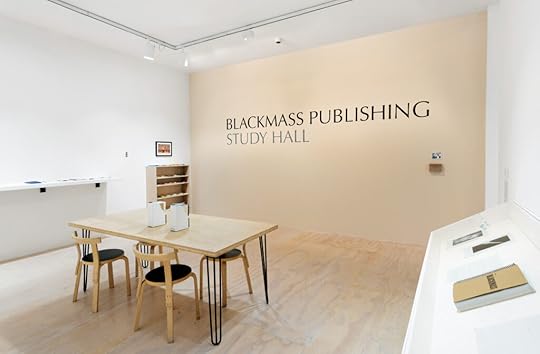 Installation view of work by BlackMass Publishing in Greater New York, MoMA PS1, 2021–22
Installation view of work by BlackMass Publishing in Greater New York, MoMA PS1, 2021–22Photograph by Martin Seck. Courtesy MoMA PS1
Institutions, including the New York Public Library’s Schomburg Center for Research in Black Culture, are finally taking notice. For MoMA PS1’s 2021 survey exhibition Greater New York, BlackMass built a “study hall,” an archive of independent publications from their own collection. In a throwback to zines’ origins in correspondence art, and in a nod to the restrictions imposed by the COVID-19 pandemic, they also set up a post office box in Jamaica, Queens, and made a global call for contributions to be mailed in. (In a less inspiring echo of Jones’s trouble with the Canadian post office, Hassan and Sorrell likewise reported that packages sent to them were intercepted and opened by the authorities, without explanation.) “Reading rooms are generally quiet places,” Sorrell says. “We wanted the installation to be active. We wanted courtship and hanging out and music playing in the space. We fought for an installation where people are able to touch and experience the work, where things can be weird.” The project inspired its own network of artists and audiences, one pair of eyes at a time. “We’re not interested in mass production,” says Hassan. “Zines have this nomadic spirit, in the way information is disseminated, handed from one person to another”—just as with the earliest zines, all those decades ago. “It’s a way to hold on to culture.”
November 16, 2023
A Feminist Memory Project in Nepal
To be absent from history is to be denied possibility. In contemporary Nepal—a former monarchy that has seen a turbulent shift to democratic representation over the last several decades—questions around the public record, and who is and isn’t included, have gained renewed force. For twelve years, the Nepal Picture Library (NPL) has been building an expansive digital archive of the country’s social and cultural life, amassing more than 120,000 photographs from a variety of sources with the aim of creating a collective sense of historical place in Nepali society.
In 2018, drawing from its larger collection, the NPL launched the Feminist Memory Project, an archival effort responding to the need for a comprehensive women’s history in the country. That same year, the vast portions of the archive were presented as an exhibition, titled The Public Life of Women, at Patan Durbar Square in Lalitpur during the 2018 Photo Kathmandu festival. “We want to highlight what the feminist experience has felt like in Nepal,” the curators NayanTara Gurung Kakshapati and Diwas Raja Kc wrote in a statement, and “show how the structures of history that push women into oblivion are in fact contingent and changeable.” In its most recent expression, The Public Life of Women has taken the form of a photobook, published this past October by the NPL’s parent photography platform, photo.circle.
Gurung Kakshapati is the cofounder and director of the Nepal Picture Library, and Raja Kc is its head of research. On the occasion of the launch of The Public Life of Women, which was recently named Photography Catalog of the Year at the 2023 Paris Photo–Aperture PhotoBook Awards, I spoke with them about the project, the possibilities of their archive, and photography’s relationship to historical memory.
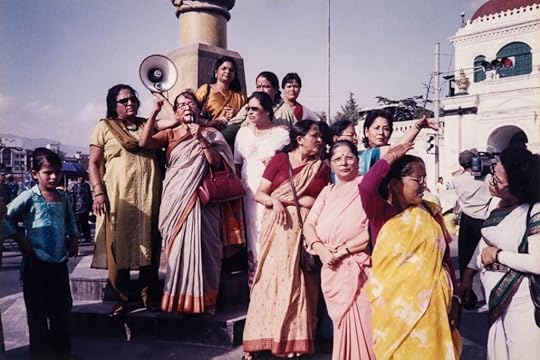 Members of the Women’s Security Pressure Group at a rally in Kathmandu, 1993
Members of the Women’s Security Pressure Group at a rally in Kathmandu, 1993 © Sushila Shrestha Collection
Varun Nayar: I want to begin with the role of the photographic archive in Nepal. What do you mean when you call the Feminist Memory Project an “archival campaign”?
NayanTara Gurung Kakshapati: When we set up the Nepal Picture Library in 2011, we’d been working as photo.circle for about five years. I come from a background of storytelling, so I was drawn to the history-making work that the archive does. There’s this strong subjectivity and set of values we’re bringing, saying, “These are important histories to be preserved and documented, be told and retold,” especially to local publics here in Nepal. This idea of an archive being state-run, or in some kind of big, clunky institutional setting that is very static, slow, and not very approachable or accessible—we’re trying to spin that on its head.
Diwas Raja Kc: We’ve done quite a bit of redefining of the concept to be able to do the kind of work we do, and have thought of the archive as something active. The idea of a “campaign” is associated with that way of thinking. It’s about the building of the archive itself—which for us means collecting and cataloging all the photographs we are working on making publicly available—but we also understand that this building is an unfinished process.
We have a double objective for the Feminist Memory Project. One is the repository nature of these photographs, thinking about the longevity of the project, and what can we do to make these materials last for people who come after us. But it’s also equally important that they have an immediate effect on public discourse. We see the archive as really about shaping public memory in Nepal, and we want to have an impact on how the politics around memory are being played. This was more severely felt around ten years ago, after the Maoist insurgency in the late 1990s and early 2000s, then a peace process, the formation of the republic in 2008, and then the reorganizing of the country as federated states, and the demand for new forms of knowledge, new histories, and new ways of thinking about ourselves as people. That’s been the context in which we’ve been working, and that was also the context in which some of these questions about memory were really intensely being felt in public life.
 Nepali activists attend the Fourth World Conference of Women in Beijing, 1995
Nepali activists attend the Fourth World Conference of Women in Beijing, 1995 © Anjana Shakya Collection and Binda Pandey Collection
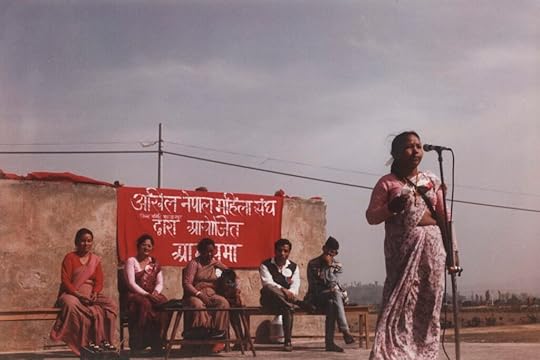 Labour activist Bishnu Ojha addresses an assembly of workers at Bhutan Devi Secondary School in Makwanpur, 1981
Labour activist Bishnu Ojha addresses an assembly of workers at Bhutan Devi Secondary School in Makwanpur, 1981 © Bishnu Ojha Collection
Nayar: As its title suggests, The Public Life of Women considers Nepali women’s relationship to the public sphere as politically significant. You’ve also described it as a key feminist strategy. How does the idea of publicness frame your work?
Gurung Kakshapati: In one sense, it’s a basic question of who do you want to reach with this work. If the archive is an active one, then who are we reaching? Of course, as a repository in more traditional ways, an archive is something that serves, say, an academic demographic, or writers, journalists, and so on. But ownership of history—and particularly at this juncture of political and social transformation in Nepal, with this real wish to want to be included in the history of this place—has been something that has driven political participation before, during, and since 2006, which is when officially we had the second People’s Movement and became this federal democratic republic. I think a lot of our work has been shaped as a generational response, to understand ways of life here, ways of organizing ourselves. I think in terms of who we are speaking to, the hope has always been to reach different publics and also think of publics as not just one broad sweeping category but, within that, of layered and nuanced identities and groups.
Raja Kc: The question of publicness is a loaded and multifaceted one. When we were doing the research, we noticed how the journey of becoming a feminist for many women was always associated with this idea of becoming public. There are all these stories about what women were doing to become part of public life and the shaping of the nation as it was going through this tumultuous and fascinating movement towards democracy, and through anti-establishment histories, which are very rich in this country.
When the democratic movement began here in the mid-twentieth century, it made a universal appeal to everyone, including women. I think even when men at the time—back in the 1940s and ’50s—hadn’t quite meant for women to leave their homes and become part of nation-building, a lot of women were interpreting the call of democracy that way, that this actually is beckoning us. That became a way in which many women were talking about their relationship with the public sphere and the nation.
 Saraswati Rai, who campaigned for girls’ education and travelled widely across Nepal to promote women’s literacy and raise awareness on social discrimination, 1950s
Saraswati Rai, who campaigned for girls’ education and travelled widely across Nepal to promote women’s literacy and raise awareness on social discrimination, 1950s© Saraswati Rai Collection
 Rashmi Shah and her husband Jagat Prakash Jung Shah at their residence in Gyaneshwor, Kathmandu, ca. 1955
Rashmi Shah and her husband Jagat Prakash Jung Shah at their residence in Gyaneshwor, Kathmandu, ca. 1955© Naveen Prakash Jung Shah Collection
Nayar: You’ve catalogued a great deal of material that reflects these political shifts. Does it translate differently between the exhibition and the book?
Raja Kc: With the book, even though it’s full of images, it really asks you to engage both aesthetically and historically. Because of the form itself, and by turning pages, even when you fight against it, you take in the information in a linear format. So I think the narrative-building happens with the form itself, not just with the content of a book. With the exhibition, we focused on the abundance of the archive, and just hitting people with the size of the feminist history. That decision emerged from a context of people repeatedly saying that women don’t have a history or don’t have archives too. We amassed a lot of photographs, and wanted people to feel that volume. The point for us was to say there are archives that you can build and ways to pull out these histories.
Gurung Kakshapati: I’ve been thinking about our work as being on the periphery of mainstream media, on the periphery of the arts world, on the periphery of academic research. We’re not at the center—in more traditional definitions, I suppose—of any of these spaces. That has its pluses and minuses, but it’s actually quite an advantageous place to be too. Because then you can sometimes draw people into this conversation or process in ways where they will enter the work or what you are proposing very unassumingly. People will respond because we’re outsiders or we are familiar enough, but we’re still not dragged down by the baggage necessarily.
 Journalist and activist Prativa Subedi sees the ocean for the first time during a tour to launch the Japanese translation of her book Nepali Women Rising, Osaka, 1994
Journalist and activist Prativa Subedi sees the ocean for the first time during a tour to launch the Japanese translation of her book Nepali Women Rising, Osaka, 1994 © Prativa Subedi Collection
Nayar: I noticed a productive tension between some of the regionally well-known figures you highlight and your emphasis on tracing collaborative networks of exchange and support. What is the significance of collectivity to this history?
Raja Kc: In some ways, this is the primary argument that we’re making, which has been consistent through the years for us. My own sense is that the mode in which feminist politics has been done in the last, let’s say, two decades or so has really valued these ideas of empowerment. And so, I think what feminism has meant in that kind of context is success, and success specifically in the neoliberal definition, because those are the dominant ways that allow for one to succeed and fail.
I think one way of telling history is through profile-building, which is like an index of women who have become successful, [suggesting] that the feminist is one that is success-driven. I think that idea of what a feminist looks like has dominated the world, and it really has also formed the way feminism is practiced here in Nepal. What we noticed looking at a deeper history of women’s movements in Nepal is a desire to belong to a group. To actually, when you step out of the house, have a collective that is not based on your kin relationships or friendships but forms of solidarity that go beyond that. I think these histories are everywhere in the world, and a certain erasure of feminism as a collective experience and longing is something that has been written out in the last twenty years. Those desires are very much there, and they’ve been the framework through which we were looking at our work: what to collect, what to value, what to assemble. It’s really about making an argument about feminism as a collective experience.
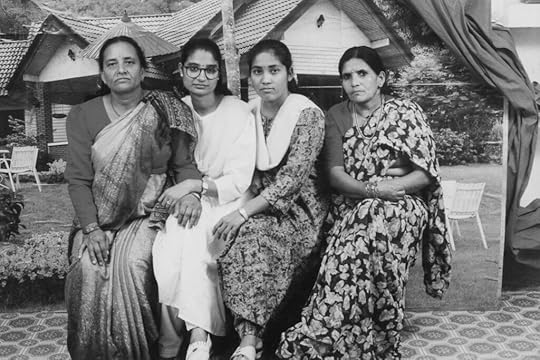 Kabita Poudel, Yamuna Ghimire, Dil Maya BK, and Maiya Bhattarai pose for a group portrait at a studio after being released from prison in Palpa, 1990
Kabita Poudel, Yamuna Ghimire, Dil Maya BK, and Maiya Bhattarai pose for a group portrait at a studio after being released from prison in Palpa, 1990© Rambha Poudel Collection
Nayar: There’s a clear sense of relationality across the archive.
Gurung Kakshapati: Yes, such a telling is not possible without the contribution, active participation, and ownership-taking of many people. It’s also about being able to bring together, as a collective repository, an archive of many acts of resistance. For instance, that photograph of two protestors behind bars from the 1960s; another one of the four women who’d been arrested for having attended a protest and then went to a photo studio to mark their day of release; or those portraits of Tharu women from the Karjahi movement in 1980.
In some ways, many of these women only meet in the archive. They might not have lived during the same time, or even known of each other. It has a cumulative impact on me: that it’s taken several generations of women resisting for us to get here. We’ve really tried to be mindful about foregrounding images with lots of people, crowds, masses. It’s not just about individual women. Outside of the domestic thresholds, many women were experiencing collectivity for the first time when they started going to college, school, the workplace, or even a protest. Whenever we feature individual or passport-size photographs in the book, such as from the collection of the Nepali writer Bhagirathi Shrestha, we tried to put many of them in one place. So it does feel like the archive is also a correlation of all of these experiences.
 Two teachers at their high school in Tehrathum, 1970
Two teachers at their high school in Tehrathum, 1970© Bill Hanson, Peace Corps Nepal Photo Project
 Women at a national scout master training event in Sundarijal, 1975
Women at a national scout master training event in Sundarijal, 1975© Shanta Laxmi Shrestha Collection
Nayar: In a conversation at the end of the book, you both discuss: “Do photographs make people think more historically?” What possibilities do photographs offer this project?
Gurung Kakshapati: Photographs have really been central to a lot of the work we do. We’re thinking visually, and we’re very much producers, but also consumers, of a visual and image culture. If we’re thinking of posterity, of why we’re building this archive, it’s so fifty years later these records and narratives exist. It feels like fifty years later the visual record is what people will feel most familiar with, or people will have most fluency with. And, I mean, in Nepal, photography actually hasn’t had that long of a history, and only a very small segment of society has had access to photography for a considerable amount of time. But regardless of that, it does feel like women were always taking photographs, to give to each other as tokens of friendship, to mark something, to validate something. That’s what I meant by “thinking historically” and what photographs perhaps allow and encourage us to do.
Raja Kc: The way that we work is not just building repositories. We actually also do these projects so that we can put them out as forms of activation and engagement, to the extent that we’re not just collecting; we’re creating narratives as well. We’ve noticed that there are affordances that photographs have that allow for the kind of work we do, for collective storytelling. With this history, we really wanted a democratization of narratives, or to contest the feeling that history is written for certain kinds of people with power.
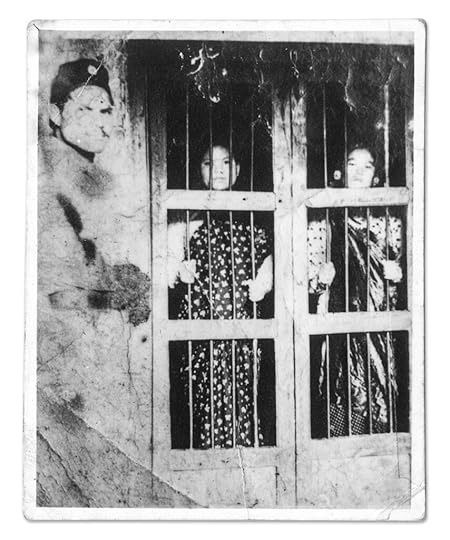 Prem Kumari Tamang of Nuwakot and Lal Maya Tamang of Dhading held at Dillibazar Prison after coming to Kathmandu to protest King Mahendra’s Panchayat government, 1961
Prem Kumari Tamang of Nuwakot and Lal Maya Tamang of Dhading held at Dillibazar Prison after coming to Kathmandu to protest King Mahendra’s Panchayat government, 1961 © Shanta Shrestha Collection
The nature of the photographs we’re really sort of activating is that everyone owns them. These are very familiar genres of photography, and people feel like these are their material. They actually have them in their homes, so the archive itself begins to be defined as something that is not in a state or institutional repository, but actually what we own in our homes, in our personal lives. That is the foundation for telling history, and because photographs were that genre of documentation, I feel like some of the success in the democratizing of the history is fundamentally linked to the thing that a photograph is. We’ve been really thinking about the sensorial or haptic qualities of photographs, or the way they elicit emotions and affects, that the way that you relate to what you’re seeing is based on the triggering of certain kinds of reflections, emotions, and instincts. That to me is really fundamental to what photographs are as artifacts.
The other thing we talk about is the way iconicity and indexicality work in photographs, and how they could be used to tell the story of women’s history as one of presence. Just the sheer force of evidencing presence through photographs really matters in a historical sense. I think photographs allow you a kind of evidencing that is not contestable, and we were really using these affordances and techniques to make an argument about feminist history in Nepal.
N ayar : It’s about seeing this history in full, but also—I imagine—allowing it be seen by more people.
Raja Kc: There are all these photographs that are not properly annotated or documented to be of much use to people who might want to access them. So we’ve been thinking about possibly spending the next year or two to really dedicate our time and commitment to the Feminist Memory Project.
Gurung Kakshapati: We’ve had conversations about the politics of metadata or annotation, like: Who puts in what data or information? Is there a way to do that in a collective or plural sort of way? We’ve talked about the possibility of crowdsourcing annotations and metadata, for example. How possible is that? How do you fact-check the reliability of one person’s memory versus another’s? There are all of these challenges to consider.
 Visitors sit for a photograph with the acclaimed Nepali writer Bishnu Kumari Waiba (left) in her room in Mhepi, Kathmandu, which served as a hub for the city’s progressives to meet and share radical ideas, 1980s
Visitors sit for a photograph with the acclaimed Nepali writer Bishnu Kumari Waiba (left) in her room in Mhepi, Kathmandu, which served as a hub for the city’s progressives to meet and share radical ideas, 1980s© Sukanya Waiba Collection
Nayar: Where does The Public Life of Women go from here?
Gurung Kakshapati: I’ve been thinking a lot about how this book is going to circulate. We’ve been self-publishing for some years now, but the distribution, which then impacts the circulation, is really not easy, as all of us who make books know. We did two thousand copies of this book, and that’s a larger print run than we’ve done before. It feels like we’re going to run out very soon. We want this book to circulate in a different way; at least half of this print run will go out to the 130-plus contributors and the institutions that they’re tied to. We’re also really keen to do free distributions for colleges, schools, and libraries, and also outside of Kathmandu.
Perhaps, several years down the line, we will need a second edition that is a much less expensive paperback version, for example. It feels very experimental each time, and it’s been interesting to revisit a project five years after it was published, for example, and really think about circulation then. There are certain things that we want to be very intentional about in terms of where we want this book to reach. For instance, I think next year, we’re really hoping to travel to different places in Nepal, partner with different groups and organize engagements, and enter or create discursive and civic spaces in different towns and villages. I’m curious to see what something like this book feels like in that kind of milieu and space, as we build the archive, deepen what we know, and create layers of knowledge around these collections. We can’t be everywhere all the time, but we’re thinking about how to work in decentralized ways, build partnerships, and allow for other people to take this work out into the world, and then into their own worlds also. Sometimes if it’s too precious, that defeats the purpose.
A Screenwriter’s Forgotten Photographs of American Televisions
In 1969, shortly after graduating college and returning home to Los Angeles, Dennis Feldman found himself photographing televisions. It was a time when TV organized the American home and society at large, pervading everyday spaces, public and private, and transfixing its consumers as the radio never could. There were three national networks and programming genres galore—quiz shows, soap operas, Westerns, situation comedies, sporting events, the news. Feldman, the son of a distinguished television and motion picture producer, grew up in Beverly Hills, and was a part of the first generation in history to be glued to the television screen, or any screen whatsoever, for essentially a lifetime. Since his family was among the first on the block to have a television set, kids from the neighborhood spilled into their home after school to watch the puppet program Time for Beany. He would go on to write in his epochal photobook American Images (1977), a project with a national scope in the tradition of Walker Evans’s American Photographs (1938) and Robert Frank’s The Americans (1958): “There is something overwhelmingly appealing to me about containing the world in one of those rectangular shapes—to live my life in one room.”
 Dennis Feldman, Downtown LA, 1969
Dennis Feldman, Downtown LA, 1969At the time, TVs were a site of both desire and anxiety, providing a magnificent portal to other worlds inasmuch as it confined vision to an addictive electronic box. By 1970, 95% of American households had at least one television set, watched on average for 5.9 hours per day. While the concept of “screen time” emerged in parenting discourse about TV in the early 1990s, becoming an unshakable cultural fixation with the rise of smartphones in the 2010s, the prominence and temporal demands of screens indeed dates to the postwar period. Children and adults were captivated by their television sets in ways not entirely dissimilar to our contemporary engagement with screen devices.
Feldman’s interest in TVs and the fantasies they propagated arose from a photography project he was pursuing after college. Visiting cheap residential hotels in the downtown Los Angeles district once known as Skid Row, he politely asked the inhabitants if he could both take their portraits and turn the camera around to record the other side of the room. Some agreed; others didn’t. For him, these impoverished dwellings symbolized his anxiety of being a failed artist; fear of withering away in one of those dreary rooms was what led him to photograph them. Because the individuals, down on their luck, were often watching TV, the second set of photographs he took almost invariably showed a boxing match or a rerun episode of The Lone Ranger, frozen in time. The process of finding subjects was reminiscent of his former summer job selling encyclopedias to working-class households in the Los Angeles suburbs. Though short-lived, the position taught him to knock on doors and cajole people into inviting him into their living rooms to recite his sales pitch. He drew on this skillset as he went door to door with a Leica.
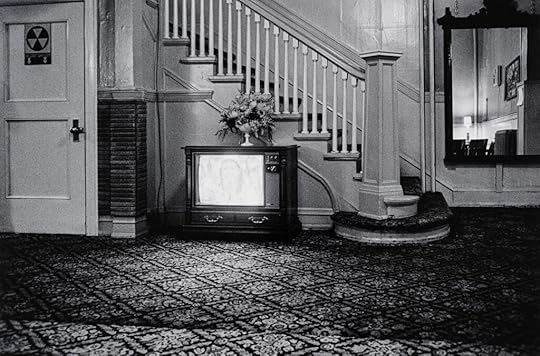 Dennis Feldman, TV in hotel lobby, Seattle, WA, 1974
Dennis Feldman, TV in hotel lobby, Seattle, WA, 1974 Dennis Feldman, TVs for sale, New York City, 1974
Dennis Feldman, TVs for sale, New York City, 1974A committed documentarian, Feldman never manipulated the environment or took more than a few pictures total. He photographed each television set in the full specificity of its domestic setting, whether it served as makeshift shelf for prescription bottles or rested askance on a dirt-encrusted floor. In this respect, his photos contrast with the sterile, more decontextualized apparatuses of Lee Friedlander’s Little Screens from 1963 to 1969—a series Feldman was only marginally aware of. As he recently told me, “The interiors of peoples’ homes, the images they had in their homes, their clutter and disorder were a portrait of their mind, of their consciousness. And the TV was the national consciousness, generating images and words, dialoging characters. Those fantasies and realities . . . clashed, but they coexisted for that person in that moment.” Taken in Skid Row, a short drive from the Hollywood studios that pumped out irresistible visions of glamor across the country and around the world, Feldman’s photos couldn’t have laid bare this class discrepancy any more plainly.
 Dennis Feldman, West Haven, Connecticut (TV with small flag), 1971
Dennis Feldman, West Haven, Connecticut (TV with small flag), 1971In 1974, Feldman traveled to forty-nine states with his then-wife Beverly, driven by his preoccupation with the national psyche along with his desire to emulate the storied trajectories of Walker Evans, his friend and professor during his graduate studies at Yale, and Robert Frank, an encouraging acquaintance. His mission was simple: to document disparate scenes of American life. Over the course of eleven months, the couple zigzagged around the country in a pickup truck with a shell on top, used a piece of plywood with foam as a bed, and heated up canned Dinty Moore stew on a propane gas stove. It was a far cry from Beverly Hills. When there was enough money for a motel room, Feldman covered the bathroom windows in tinfoil and developed dozens of pictures, many of them unsurprisingly involving televisions.
In a living room in Ellamore, West Virginia, he photographed a shirtless white boy who averts his gaze from the TV for an instant and looks suspiciously toward the camera. In a campground in Lodi, Ohio, he photographed a small TV perched on a shady picnic table, its screen conjuring two Black women with smiles plastered on their faces. In his own motel room in Springfield, Missouri, he photographed the live resignation of President Richard Nixon—the culmination of more than a year of publicly broadcast Watergate hearings that had engrossed the country. A screen decontextualized from its setting, as if to stress the event’s historical significance, the image was Feldman’s most frontal television portrait.
 Dennis Feldman, Sherwood Forest Campground, Lodi, Ohio (TV on picnic table), 1974
Dennis Feldman, Sherwood Forest Campground, Lodi, Ohio (TV on picnic table), 1974 Dennis Feldman, Nixon Resignation, Springfield, Missouri, 1974
Dennis Feldman, Nixon Resignation, Springfield, Missouri, 1974 All photographs courtesy the artist and Harvard Art Museums
Across this TV series, screen time was not measured in the minutes and hours spent watching Orson Welles costume dramas or Mr. Whipple toilet paper commercials, but felt in the sheer quantity of bright surfaces that populated multitudinous environments and brought new imaginaries and affective arenas to public and private cultures. The series casts screen time as both an individual and a collective experience. “I saw every interior as a picture of the mind of the person(s) who assembled that space. A portrait by other means,” he told me recently. “And the one moving thing in the room was the image on the TV—the same national consciousness running in millions of different interiors.”
As a young photographer in the 1970s, Feldman had a rigid idea of what counted as a good picture and only printed and published a small number of television sets. But revisiting his contact sheets decades later, after a noted career in Hollywood as a screenwriter, film producer, and director, he found about two hundred television images spanning his travels from this period. The Harvard Art Museums recently acquired forty-one prints from the TV series, where, in late October, a selection of them were put on view—some for the first time, anywhere. After heralding a time of screens a half-century ago, Feldman’s photographs continue to question how prolonged encounters with them—and the fantasies emitted from them—have been reshaping the human subject.
Aperture and Dikan Center Celebrate the Launch of “Accra”
On September 15, Aperture and the Dikan Center in Accra, Ghana, hosted a panel discussion and celebration for the launch of the Fall 2023 issue “Accra.” Following acclaimed issues centered on Delhi, Mexico City, Los Angeles, Tokyo, and São Paulo, “Accra,” guest edited by the artists Lyle Ashton Harris and Nii Obodai, is an opportunity for audiences around the world to learn more about the Ghanaian capital as a site of dynamic and historically important photographic voices.
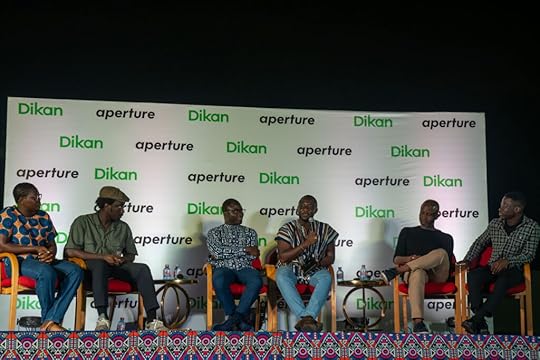 Panelists at the launch of the “Accra” issue, from left to right: Fibi Afloe, Lloyd Foster, Paul Ninson, Anakwa Dwamena, Kobby Ankomah-Graham and Carlos Idun-Tawiah
Panelists at the launch of the “Accra” issue, from left to right: Fibi Afloe, Lloyd Foster, Paul Ninson, Anakwa Dwamena, Kobby Ankomah-Graham and Carlos Idun-TawiahThe lively gathering featured an insightful discussion between contributing artists and writers, including Kobby Ankomah Graham, Carlos Idun-Tawiah, Lloyd Foster, and Fibi Afloe, and was moderated by Paul Ninson, founder and executive director of Dikan Center, and Anakwa Dwamena, a writer based in Ghana and an Aperture contributor. The evening was a testament to Accra as a catalyst of photographic excellence and the ever-growing presence of Ghana as a beacon for Pan-African thought and political activism.
Ghana has been a nexus of compelling photography since the late nineteenth century, from the output of the hundred-year-old Deo Gratias photo studio to the stylish midcentury visions of James Barnor. Aperture’s “Accra” looks both to the archives that catalog Ghana’s visual past and to the visions of a new generation. Featuring exclusive interviews with Zohra Opoku, whose textile-based works evoke mortality and resilience, and John Akomfrah, the celebrated Ghanaian filmmaker, “Accra” displays artists connecting local visual culture to global conversations, engaging in history, and facing the contemporary moment.
 Nii Korley Clottey talking with audience members
Nii Korley Clottey talking with audience members  Anakwa Dwamena
Anakwa Dwamena  Audience members during the panel discussion
Audience members during the panel discussion  Guests reading a copy of “Accra”
Guests reading a copy of “Accra” 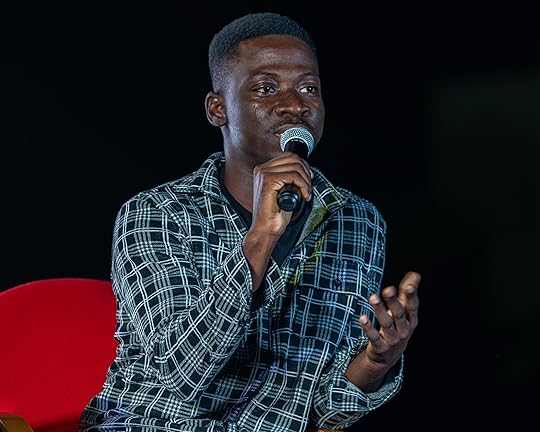 Carlos Idun-Tawiah
Carlos Idun-Tawiah 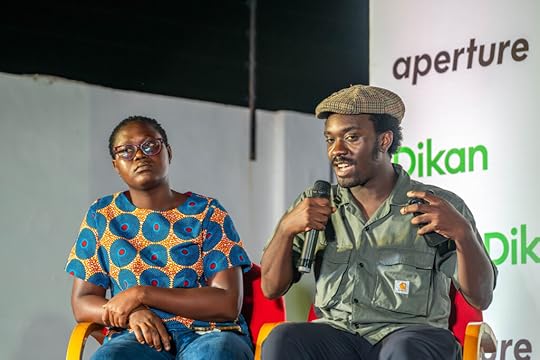 Fibi Afloe and Lloyd Foster
Fibi Afloe and Lloyd Foster  Aperture‘s “Accra” issue
Aperture‘s “Accra” issue  Nana Oforiatta Ayim
Nana Oforiatta Ayim  Paul Ninson
Paul Ninson  Guests during the panel discussion
Guests during the panel discussion 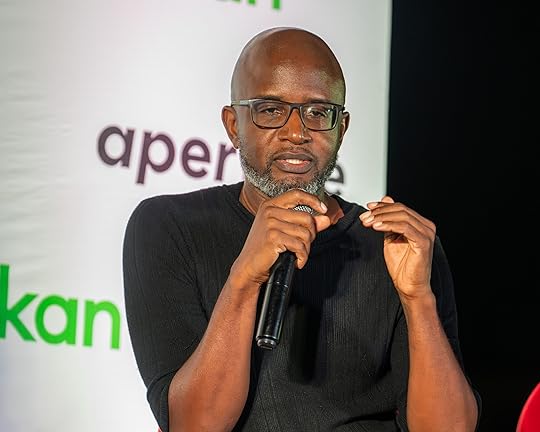 Kobby Ankomah-Graham
Kobby Ankomah-Graham  Guest reading a copy of “Accra”
Guest reading a copy of “Accra”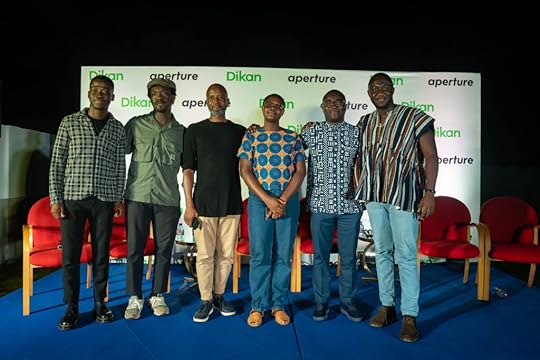 Left to right: Carlos Idun-Tawiah, Lloyd Foster, Kobby Ankomah-Graham, Fibi Afloe, Paul Ninson, Anakwa Dwamena
Left to right: Carlos Idun-Tawiah, Lloyd Foster, Kobby Ankomah-Graham, Fibi Afloe, Paul Ninson, Anakwa Dwamena Related Items

Aperture 252
Shop Now[image error]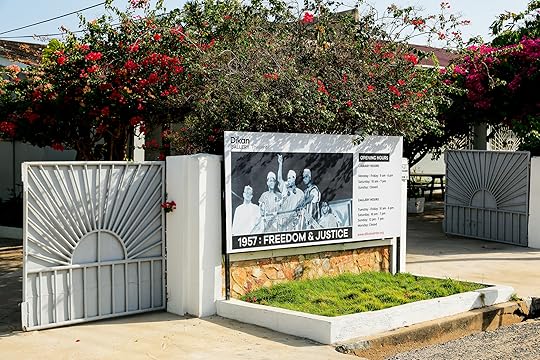
Inside the New Photography Center Energizing Accra’s Art Scene
Learn More[image error]November 10, 2023
Announcing the Winners of the 2023 PhotoBook Awards
Paris Photo and Aperture are pleased to announce the winners of the 2023 Paris Photo–Aperture PhotoBook Awards—the eleventh annual celebration of the photobook’s contributions to the evolving narrative of photography. A final jury met in Paris on November 9, 2023, to select this year’s winners. The jury included Laia Abril, artist; Tamara Berghmans, curator, Fotomuseum Antwerpen (FOMU); Alexis Fabry, curator and founder, Toluca Fine Art; Alona Pardo, curator, Barbican; and Mark Sealy, director of Autograph and Professor of Photography Rights and Representation at University of the Arts London.
Related Stories PhotoBook Awards A Look Inside the Titles Shortlisted for the 2023 PhotoBook Awards
PhotoBook Awards A Look Inside the Titles Shortlisted for the 2023 PhotoBook Awards Berghmans observed that the shared goal of the final jury was to “select photobooks that are relevant today—choosing some books that celebrate the pleasure of looking, and others that offer us deeper insights into the lesser-known histories, or to the deeply personal journeys of an individual photographer.”
An exhibition of the thirty-five books shortlisted for the 2023 PhotoBook Awards is currently on view at Paris Photo through November 12 and will travel to Printed Matter in New York City, from January through February 2024, and then to international venues, including presentations at the Helsinki Photo Festival and Photo Australia Melbourne, among others.
Below, read about this year’s winning titles.
Photography Catalog of the Year

The Public Life of Women: A Feminist Memory Project
Diwas Raja Kc and NayanTara Gurung Kakshapati, Nepal Picture Library / photo.circle, Kathmandu, Nepal
The Public Life of Women is an inspirational collection of images, documents, and the profiles of key contributors to feminism and champions of women’s rights in Nepal. Organized by photo.circle, a platform for photography and the force behind Photo Kathmandu, the more than five hundred images included in this volume were drawn from the Nepal Picture Library, a visual archive created with the goal of preserving and exploring the country’s social, cultural, and photographic history. The Public Life of Women was published on the heels of an exhibition of the work that has traveled to New Delhi, Singapore, and, most recently, the 2023 Istanbul Biennial. Shortlist juror Lesley A. Martin calls the book “a compelling, eye-opening document delivered in a compact but satisfying and impactful form. It’s a testament to the power of a carefully cultivated archive activated via the book form.” In words and images, The Public Life of Women is a moving roll call of lives and names—a fierce and consequential preservation of the inspiring stories and contributions of Nepali women who made a difference to their mothers, daughters, sisters, and fellow citizens.
 A mass meeting of former kamlaris (women bound laborers), Kanchanpur, Nepal, 2010, from The Public Life of Women: A Feminist Memory Project, 2023
A mass meeting of former kamlaris (women bound laborers), Kanchanpur, Nepal, 2010, from The Public Life of Women: A Feminist Memory Project, 2023  Members of Women’s Security Pressure Group take a rally, from The Public Life of Women: A Feminist Memory Project, 2023
Members of Women’s Security Pressure Group take a rally, from The Public Life of Women: A Feminist Memory Project, 2023 First PhotoBook Award

Tender by Carla Williams
TBW Books, Oakland, California
“This reads and feels like a beautiful and intimate journey realized in book form, evocative of an artist in tender commune with her younger self, by someone who has committed much of their artistic practice to advocating for Black women’s visibility and representational politics,” observes juror Renée Mussai. Tender by Carla Williams reveals a series of images, including private self-portraits of an eighteen-year-old Williams taken during her time studying photography at Princeton University in the mid-1980s and ’90s. The design is modest yet sophisticated, offering an intimate glimpse into a pivotal moment of the artist’s life. The book remains coherent and engrossing in all aspects of the work, from the artist’s motive to its intellectual rhythm communicated through an essay by artist and scholar Mireille Miller-Young that serves as a mediation around Black feminist expression. “Williams conjures a visual alchemy and shifting sensuality from one page to the next—from image to image, consistently imbued with a profound sense of being and becoming, of stillness, fierceness, and desire. This publication is a very generous and special gift,” says Mussai. Tender is gentle yet immensely seductive as a platform for the artist’s coming-of-age, conveying maturity, sensuality, and possibility.
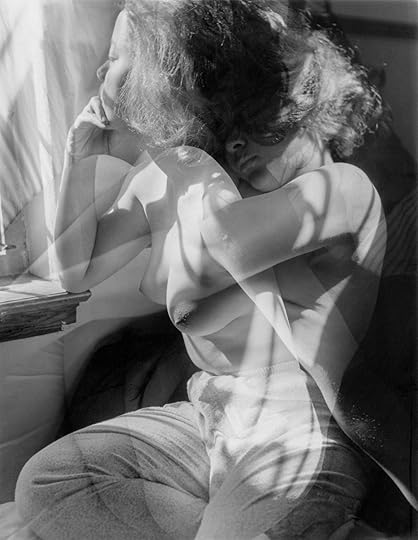 Carla Williams, Untitled, 1985–86, from Tender, 2023
Carla Williams, Untitled, 1985–86, from Tender, 2023  Carla Williams, Untitled (Crying #2), 1984–85, from Tender, 2023
Carla Williams, Untitled (Crying #2), 1984–85, from Tender, 2023 Advertisement
googletag.cmd.push(function () {
googletag.display('div-gpt-ad-1343857479665-0');
});
PhotoBook of the Year

The Drawer by Vince Aletti
SPBH Editions, London
The Drawer illustrates the vivid accumulation of photographic ephemera gathered over the years by esteemed photography critic and curator Vince Aletti. “This phenomenal publication offers special insight into one person’s unique commitment to collecting, curating and archiving imagery in public circulation over several decades. Deeply engaging, it represents a bold testament to complex notions of desire and visual pleasure,” states juror Renée Mussai. The seventy-five multi-layered compositions brought together in this book include gallery announcements, magazine tear sheets, newspaper clippings, and other printed materials dating from the 1970s to the present. The pages’ layout references the chance layering and juxtapositions of Aletti’s flat files. Each oversized spread is printed on lush, uncoated paper, unencumbered by text, entwining the worlds of art and fashion with homoerotic candor that feels provocative and daring. The images utilize the entire printed page, as full bleeds from beginning to end. “A visual feast, it is an apt reflection of Aletti’s long-standing career and commitment to art history, inviting readers to an astute mode of looking and seeing which has long nourished his practice as a critic,” says Mussai. The Drawer is an ode to the collector, a personal yet recognizable retelling through the printed page and the lure of the photographic image.
 Vince Aletti, from The Drawer, 2022
Vince Aletti, from The Drawer, 2022 
Juror’s Special Mention

Recaptioning Congo: African Stories and Colonial Pictures
Sandrine Colard, Lannoo Publishers, Tielt, Belgium, and Fotomuseum FOMU, Antwerp, Belgium
Recaptioning Congo: African Stories and Colonial Pictures takes on the crucial task of reclaiming the colonial visual narratives of the Congo, providing an extensive, multi-layered examination of this complicated photographic history. Published as a companion to an exhibition at FOMU Antwerp, the volume functions as a dialogue between texts by contemporary Congolese writers Sinzo Aanza, In Koli Jean Bofane, and Annie Lulu, and the historical archival photographs, breathing new meaning into images created and received through a biased, colonizing lens. The catalog design takes its inspiration from the minimalism and primary colors utilized by W. E. B. Du Bois in the sociological graphs created for his 1900 Paris World’s Fair “Exposition des Nègres d’Amérique.” This understated approach allows for an elegant and clear visual structure in support of the consequential and pressing historical analysis contained within. Anna Planas called out for special attention the book’s work to “bring together invaluable research conducted across three continents.” In addition to the generous spirit of scholarly collaboration as a means of redress and reconciliation, Planas notes that this is a thorny but important subject, recalling that the jury appreciated its concern with “the role of visual culture and its influence on history, as well as the importance of addressing the colonial roots of photography.”
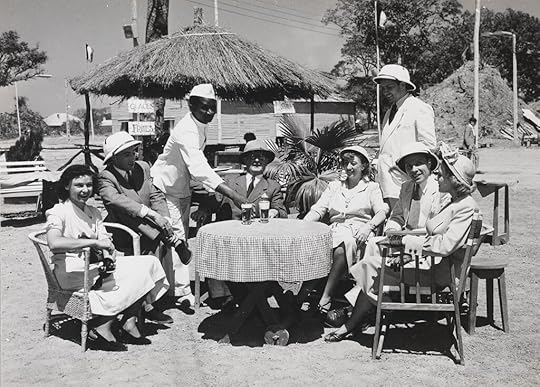 Photograph from Recaptioning Congo: African Stories and Colonial Pictures, 2022
Photograph from Recaptioning Congo: African Stories and Colonial Pictures, 2022An exhibition of 2023 PhotoBook Awards Shortlist will be on view at Paris Photo November 9–12, and will travel to Printed Matter in New York City in January 2024.
Note: Given jurors’ extensive engagement in the scholarship and production of photography books, the Paris Photo–Aperture PhotoBook Awards maintain a strict policy of recusal, in which the juror in question must state their conflict in advance and remove themselves from the discussion of books in which they were directly involved; any such book must be unanimously voted in by the remaining jurors.
Aperture's Blog
- Aperture's profile
- 21 followers



